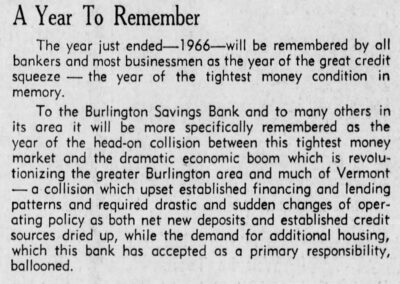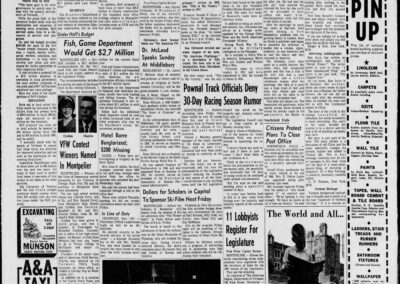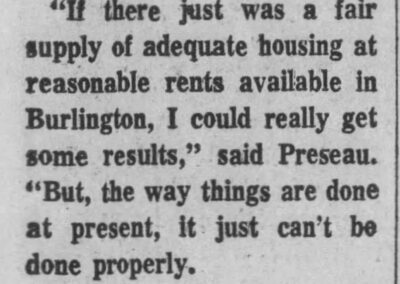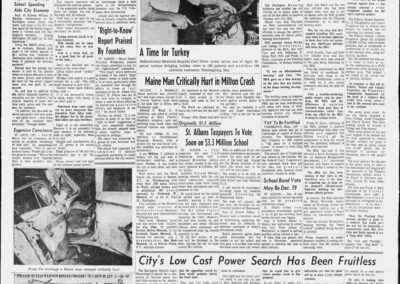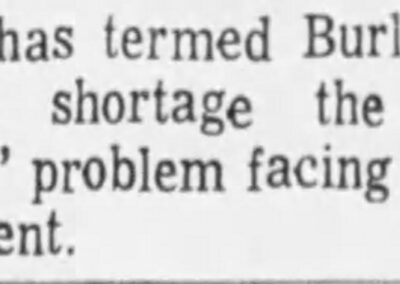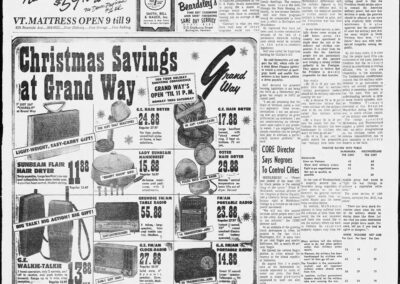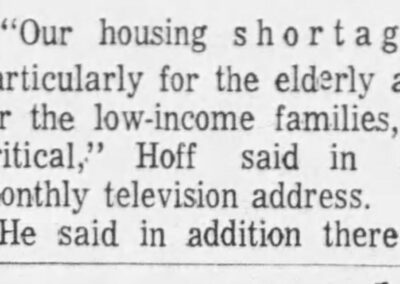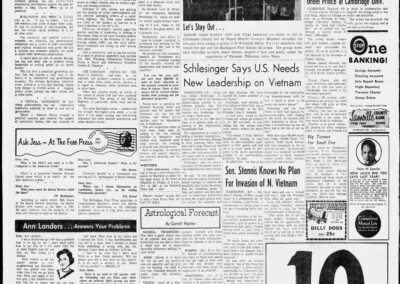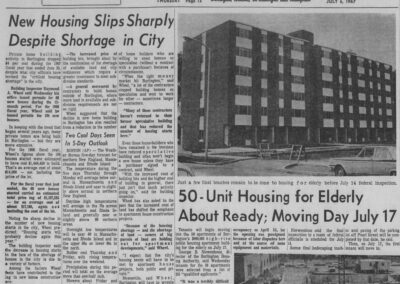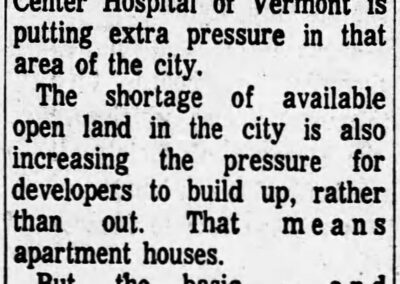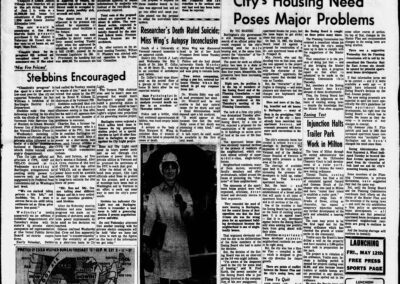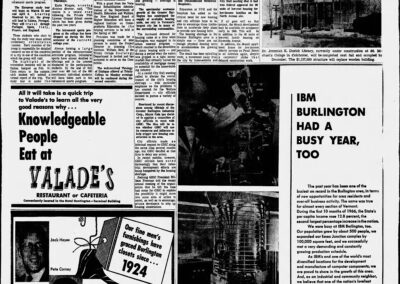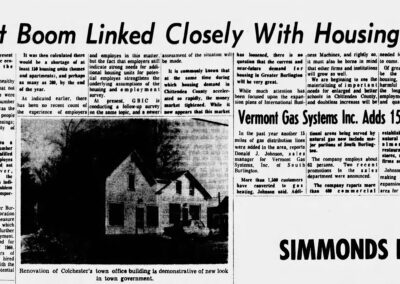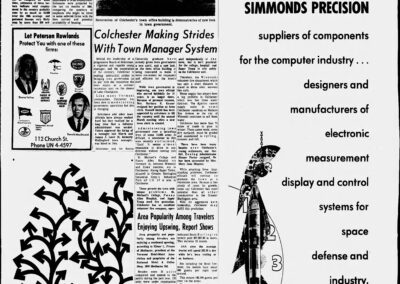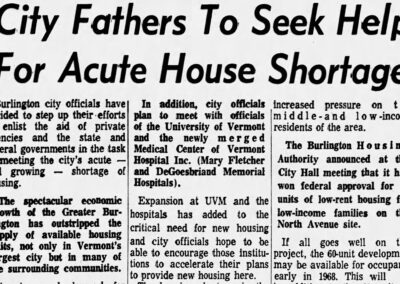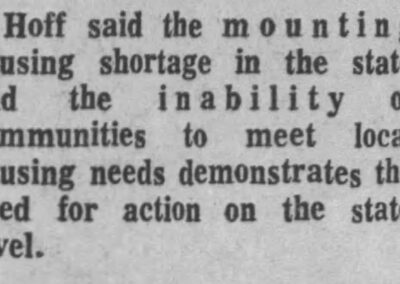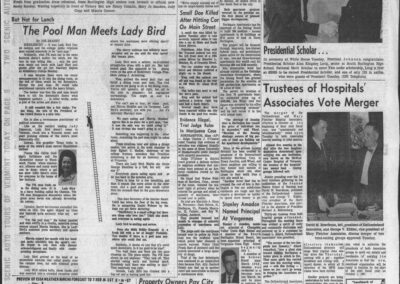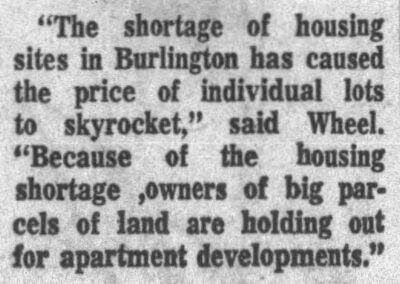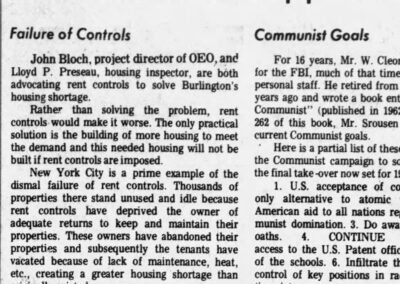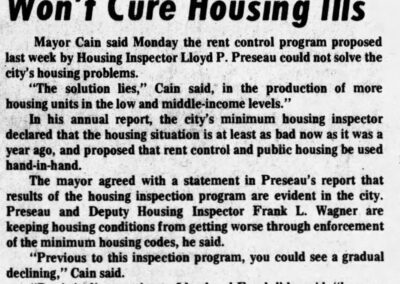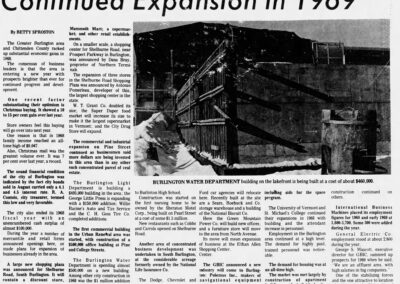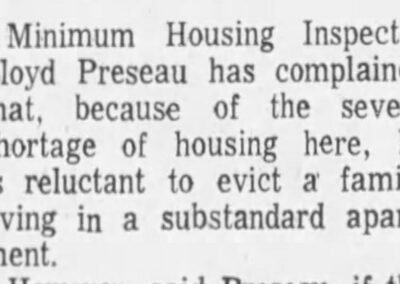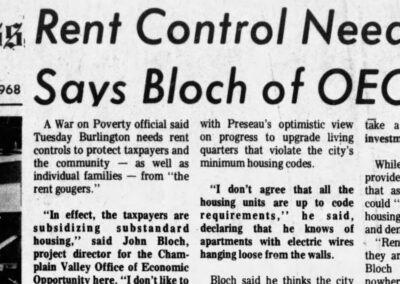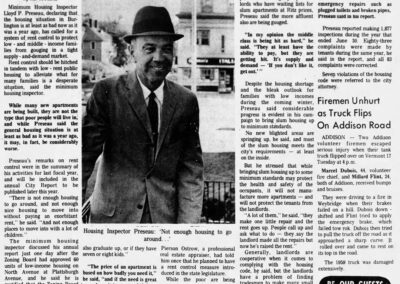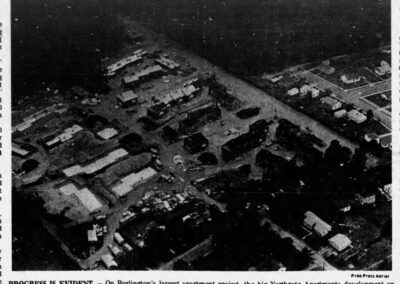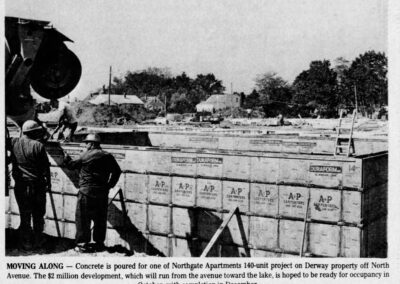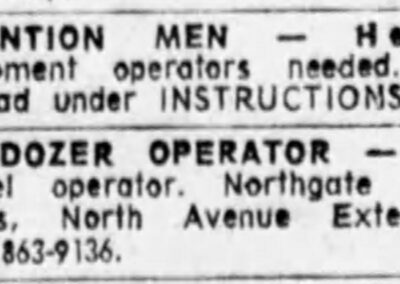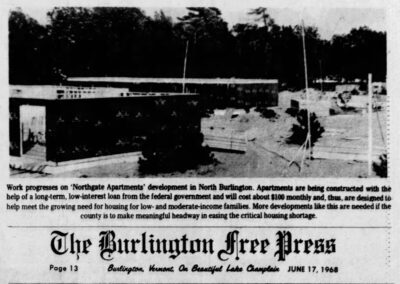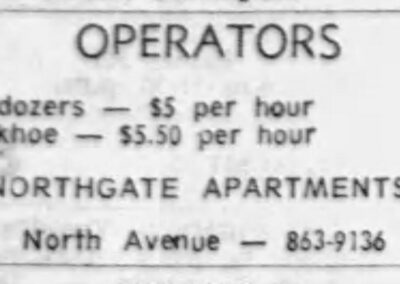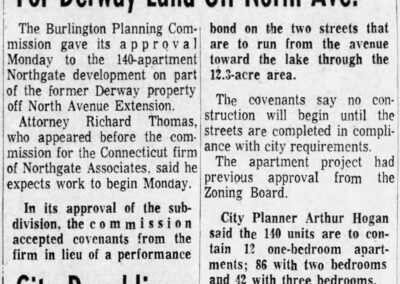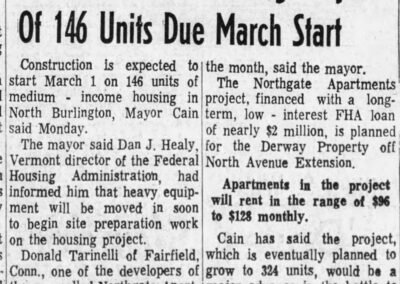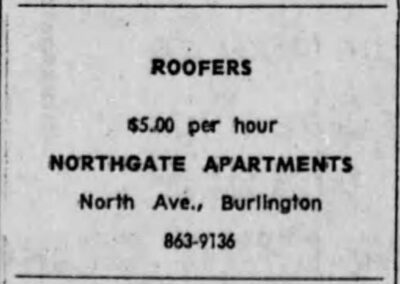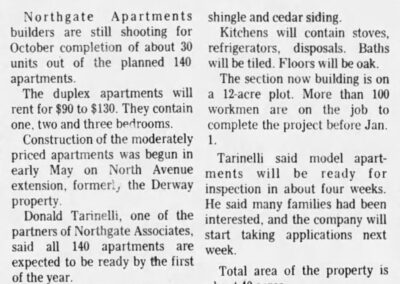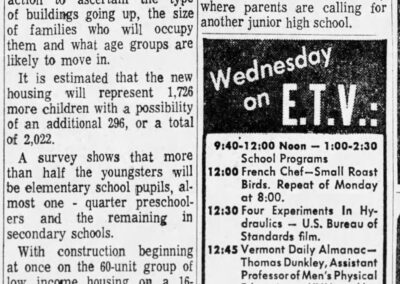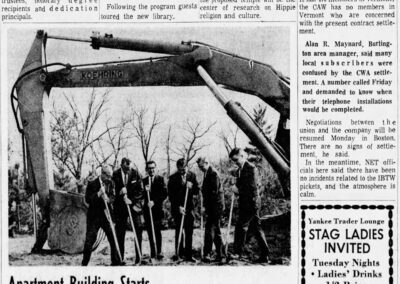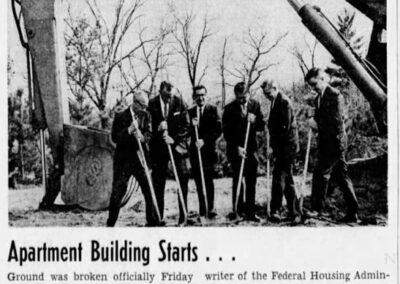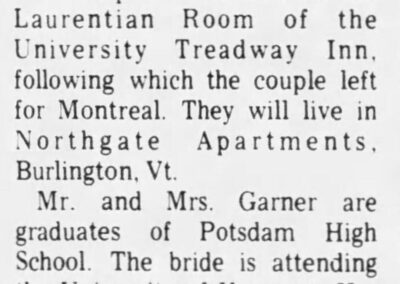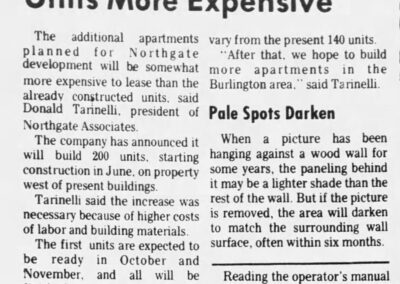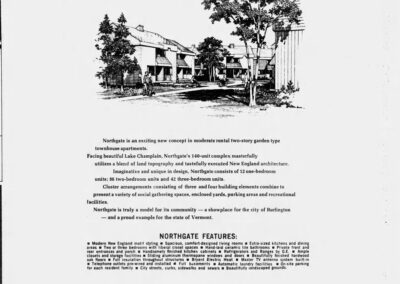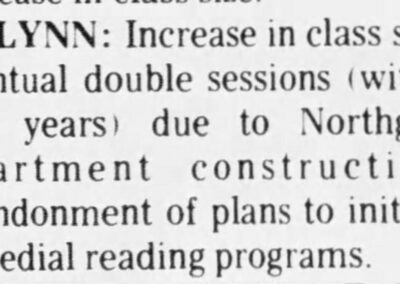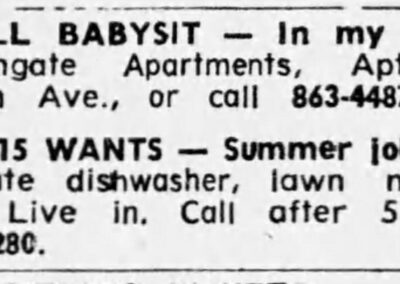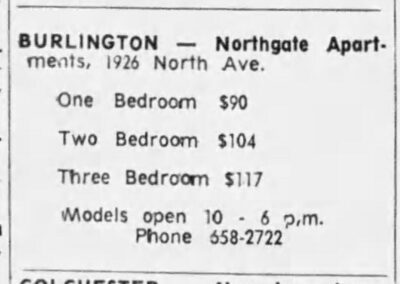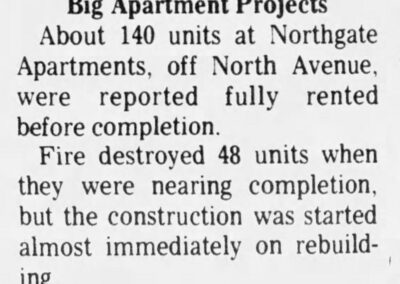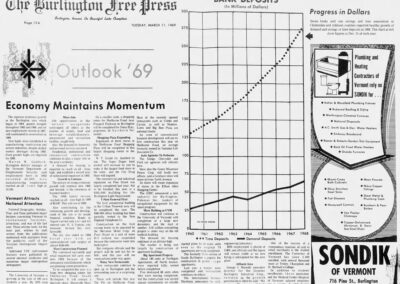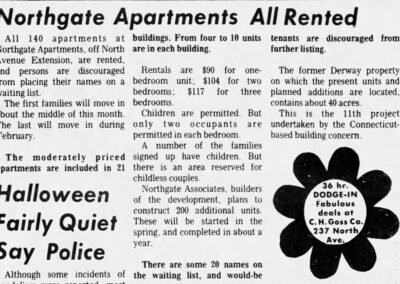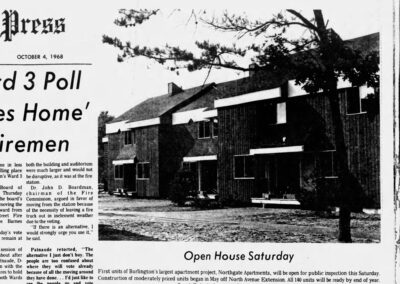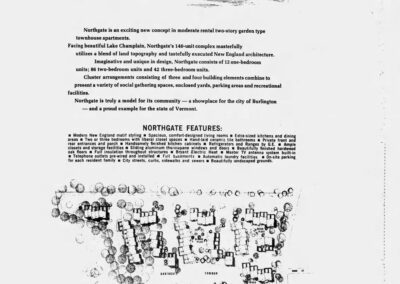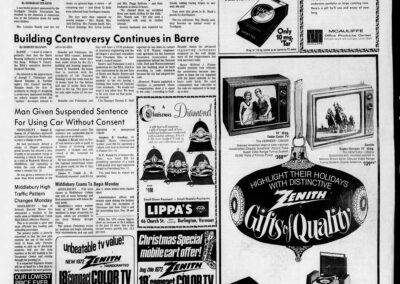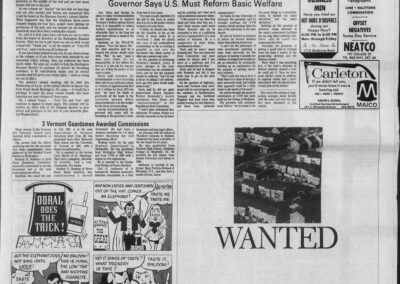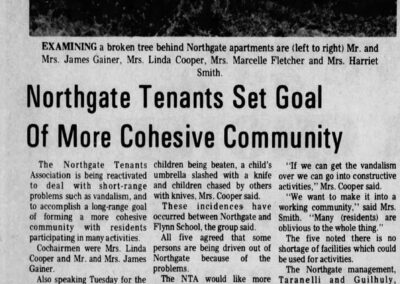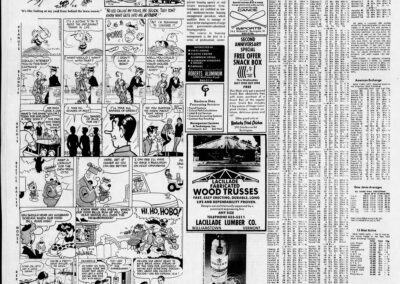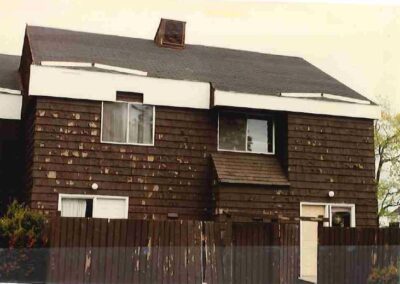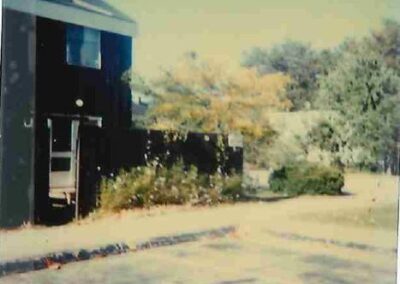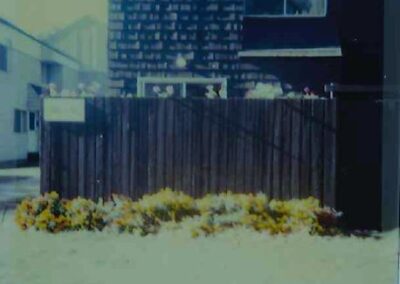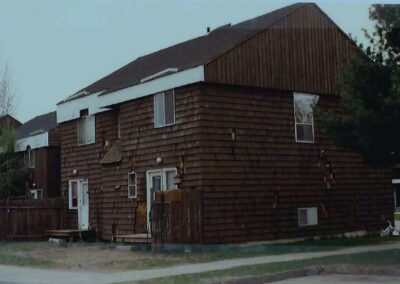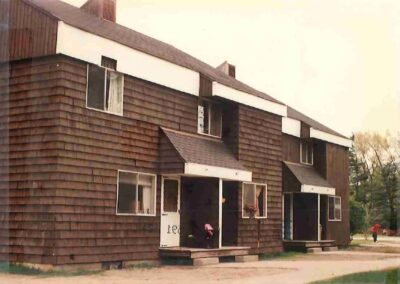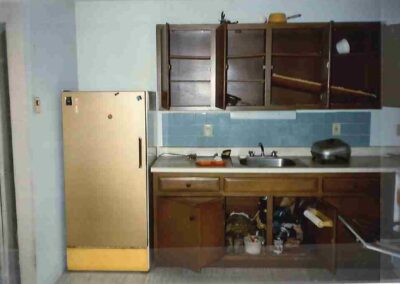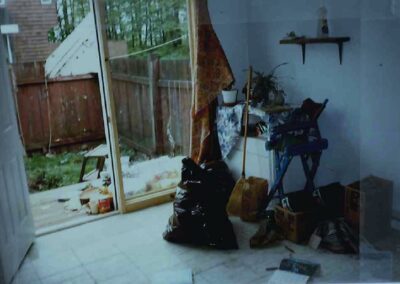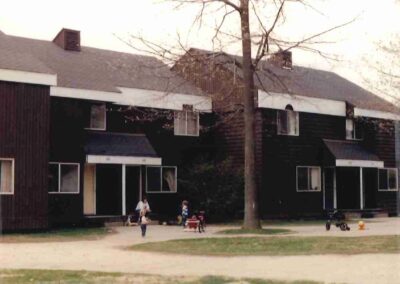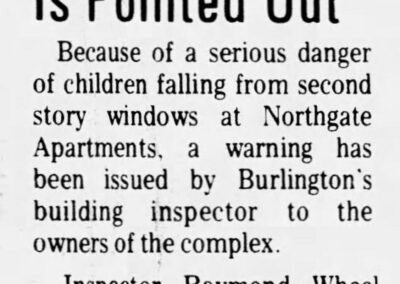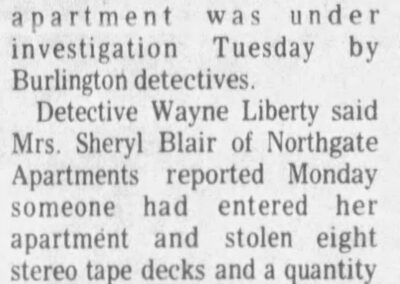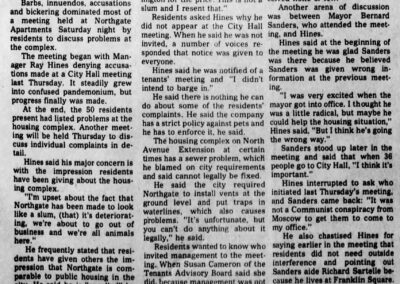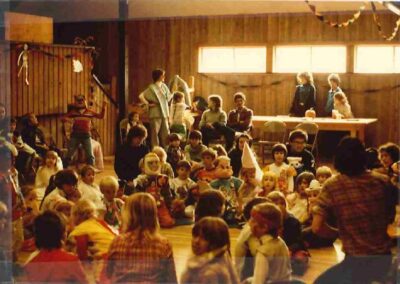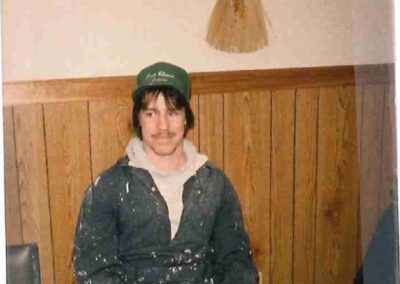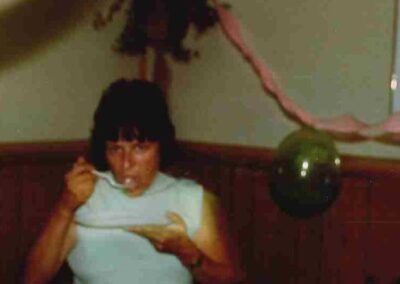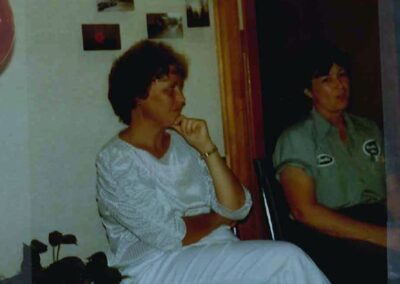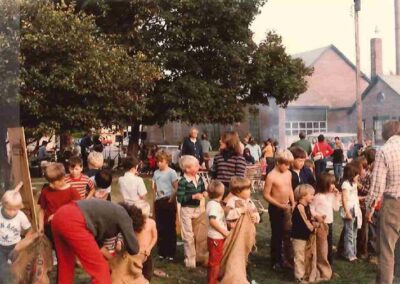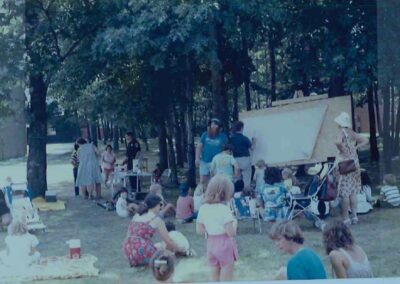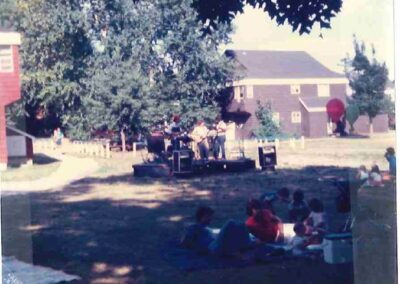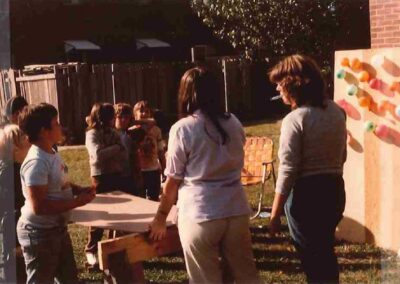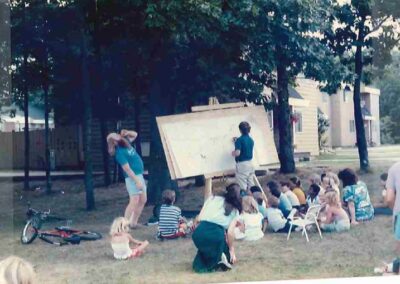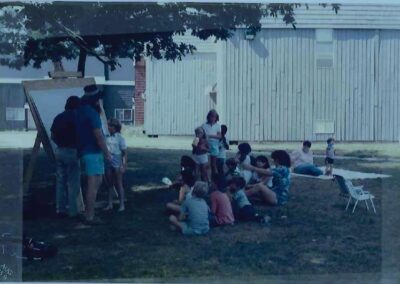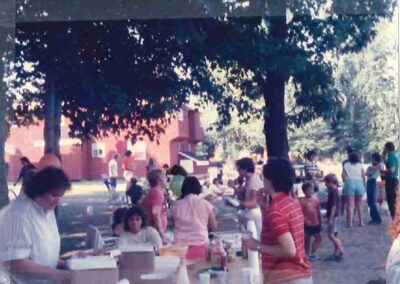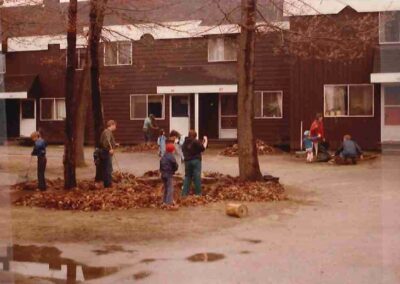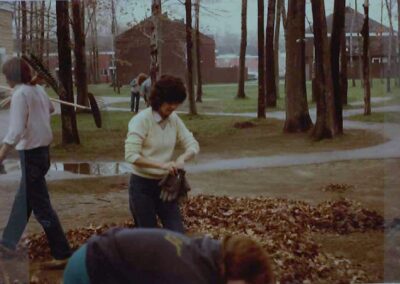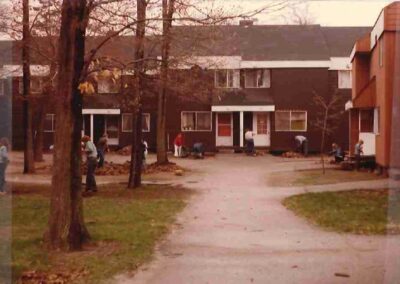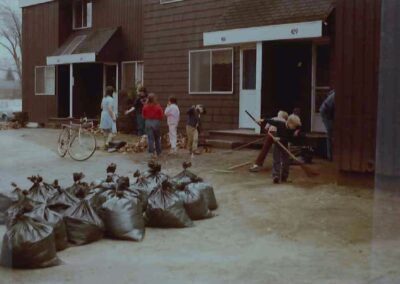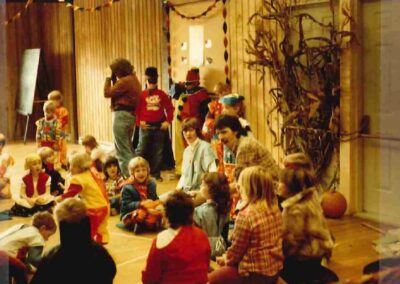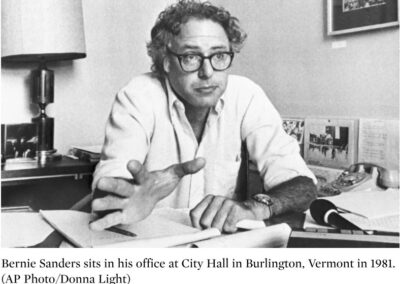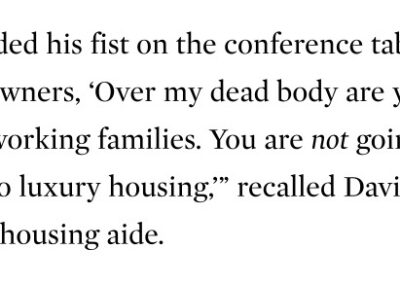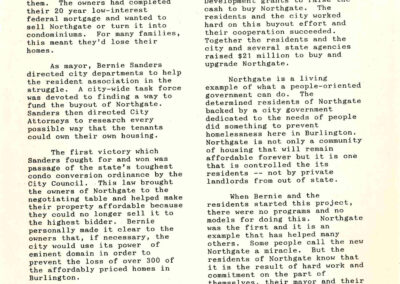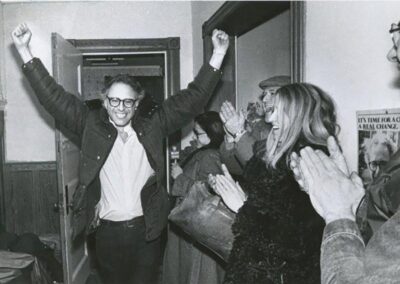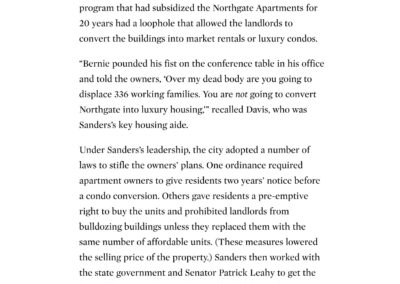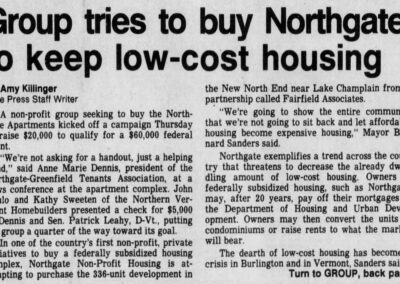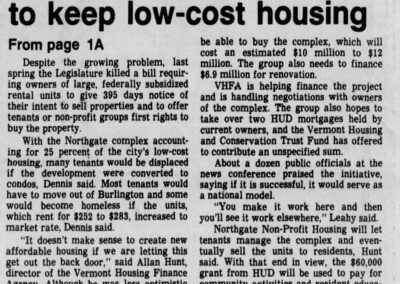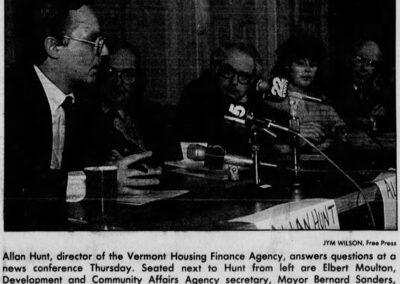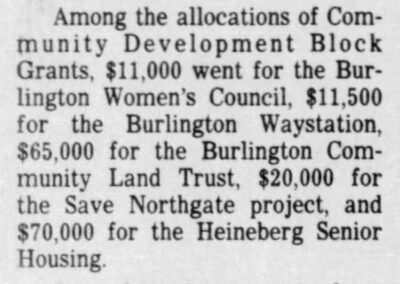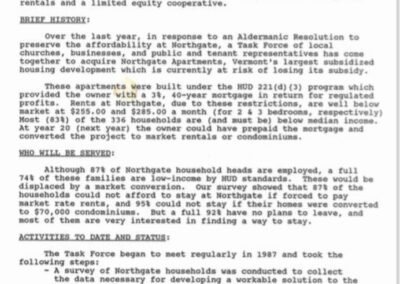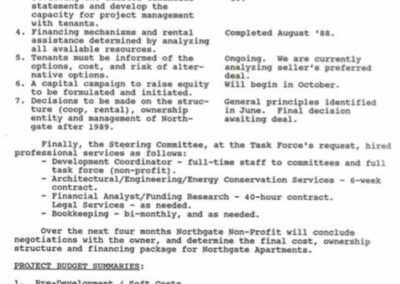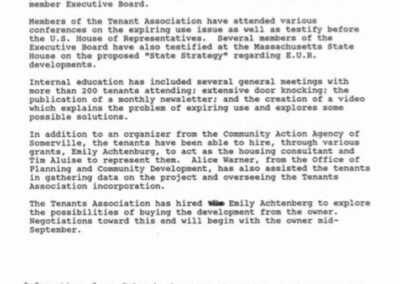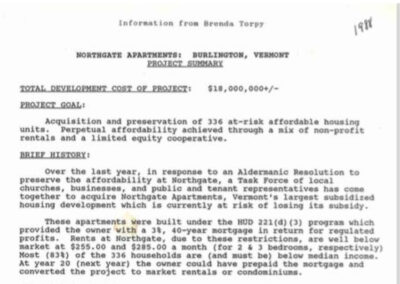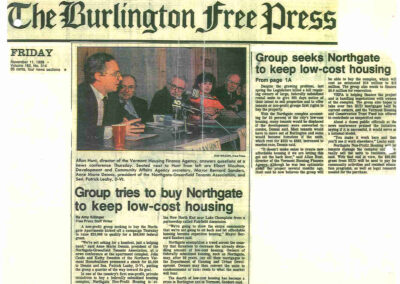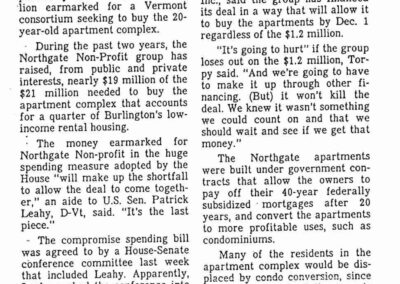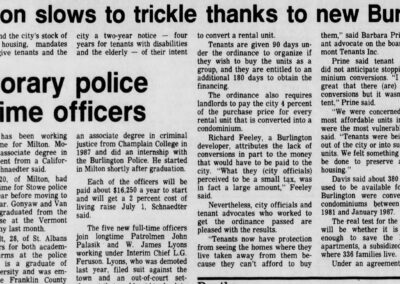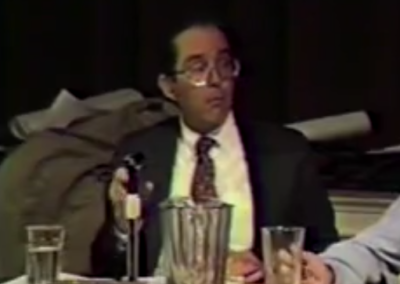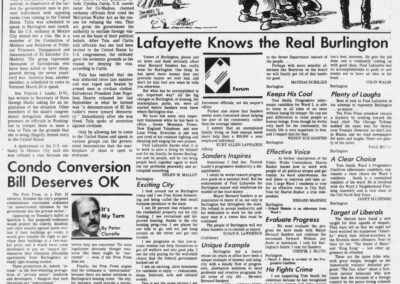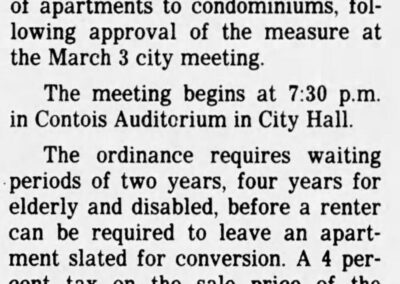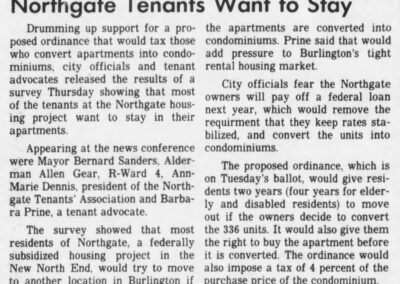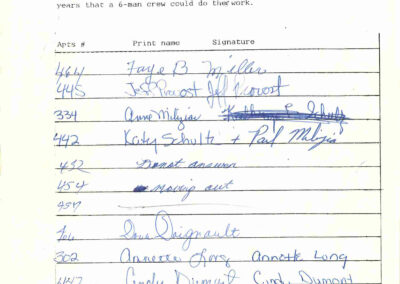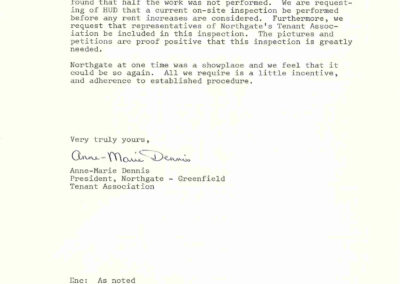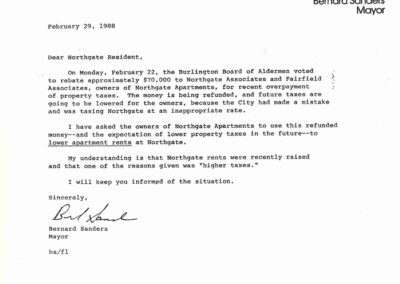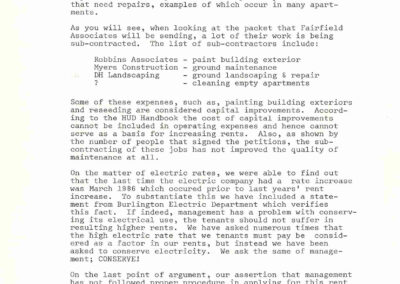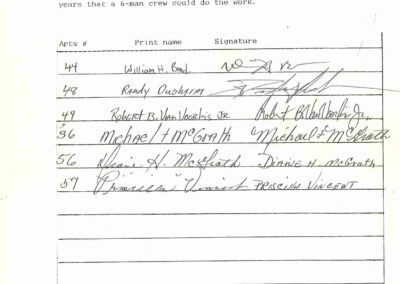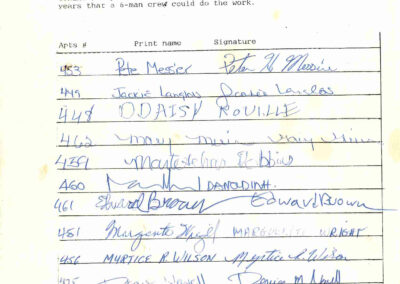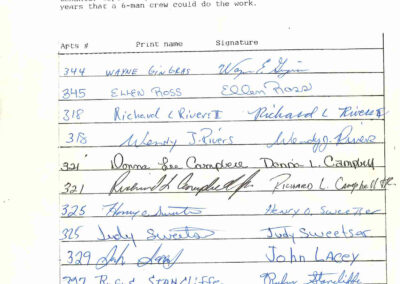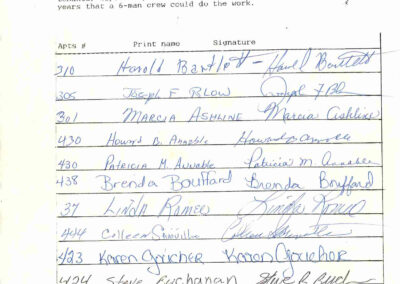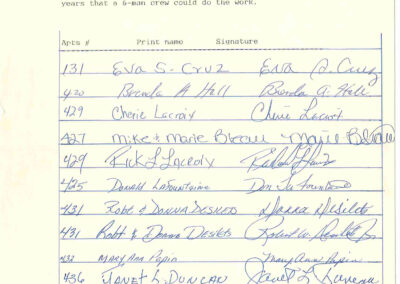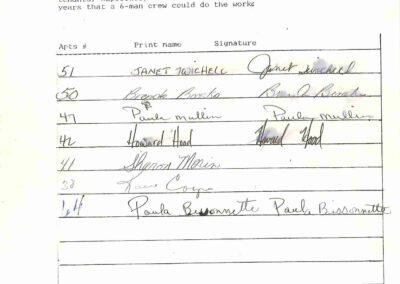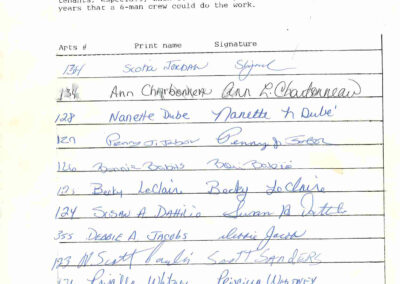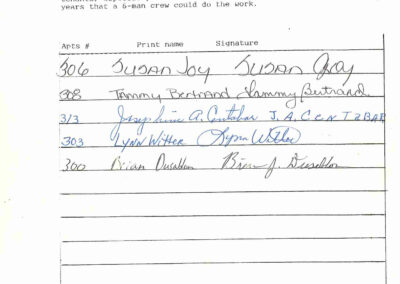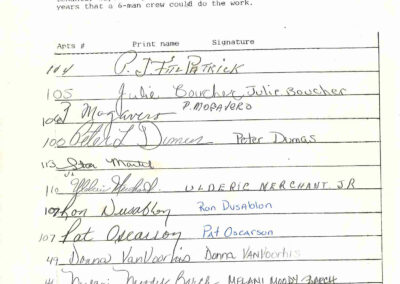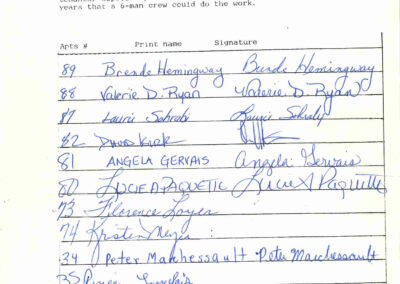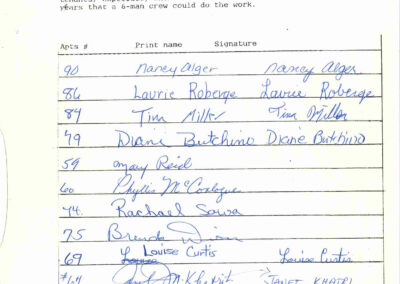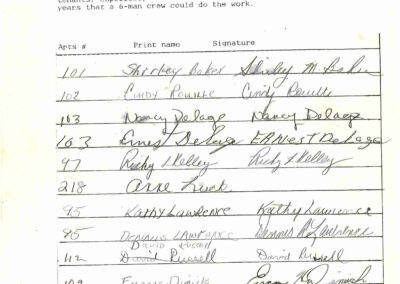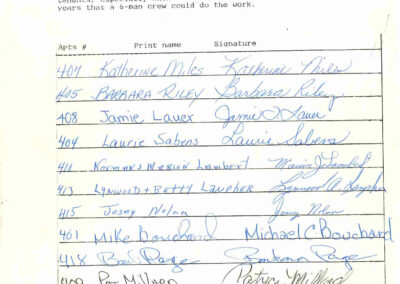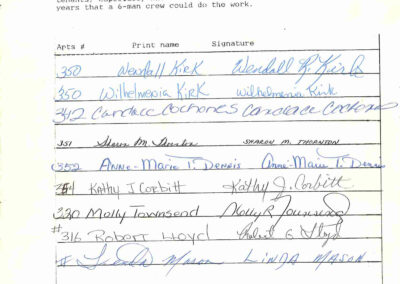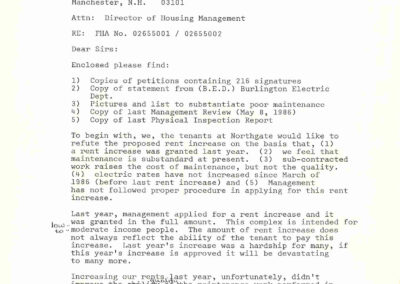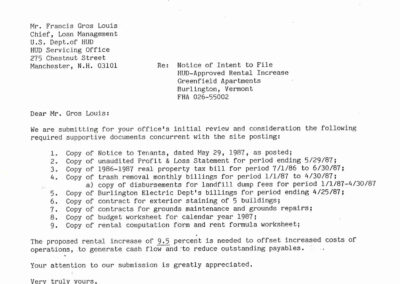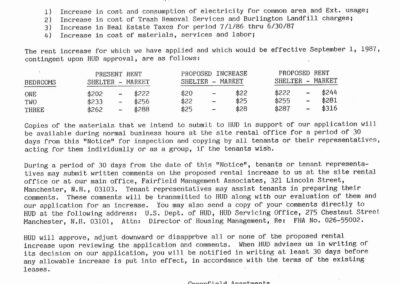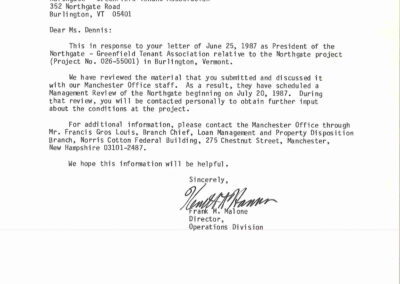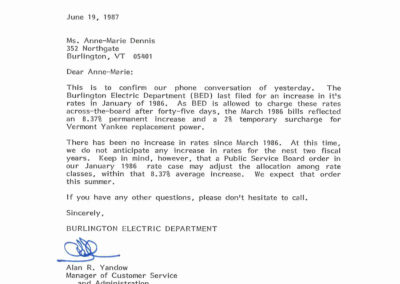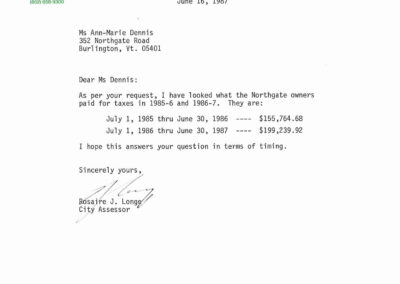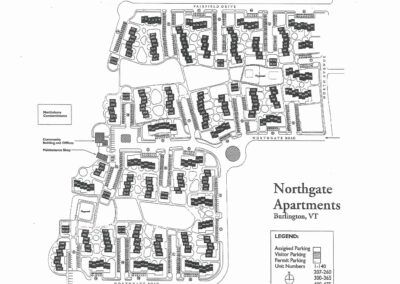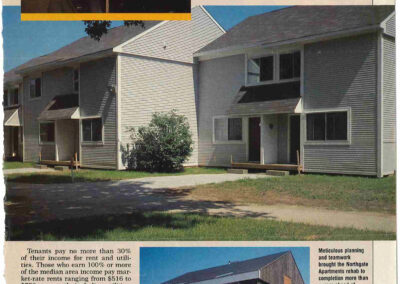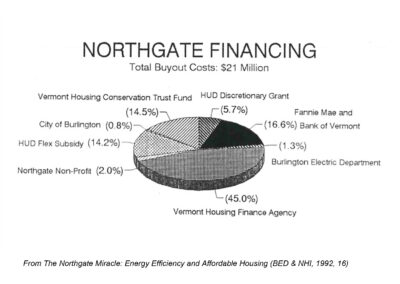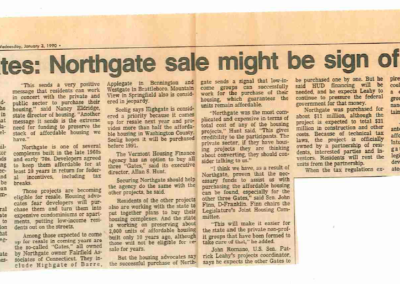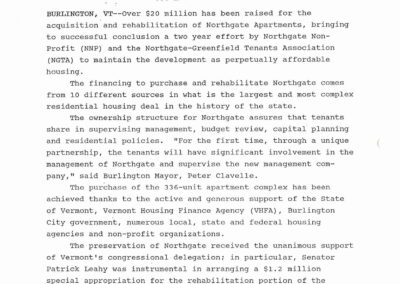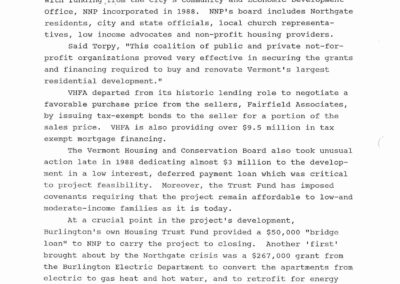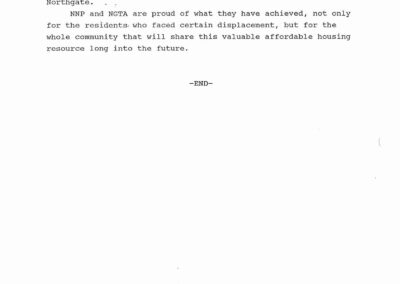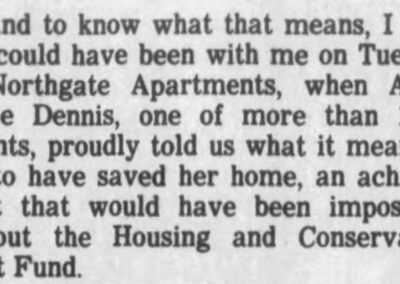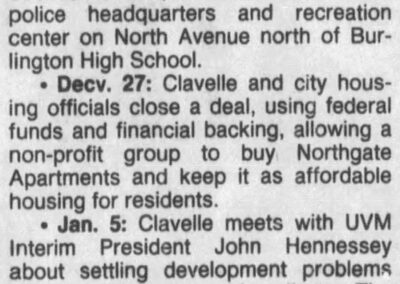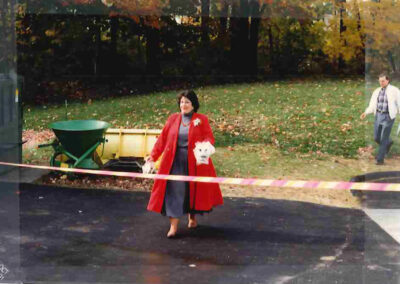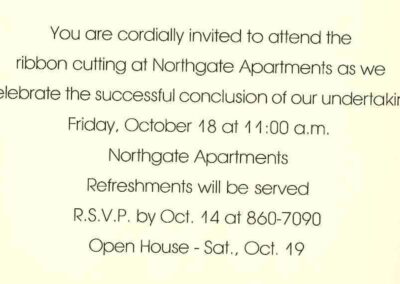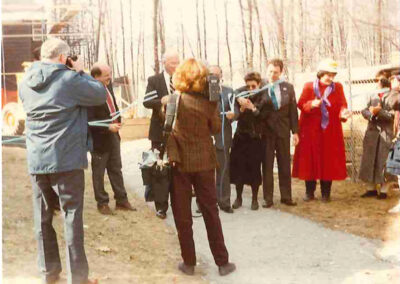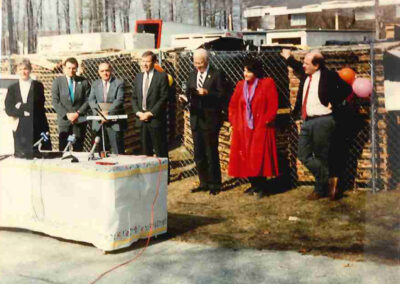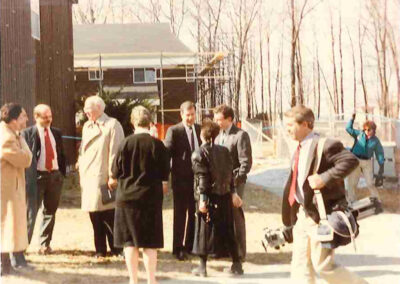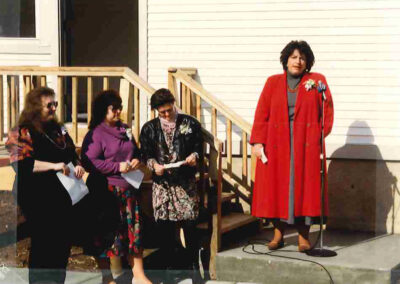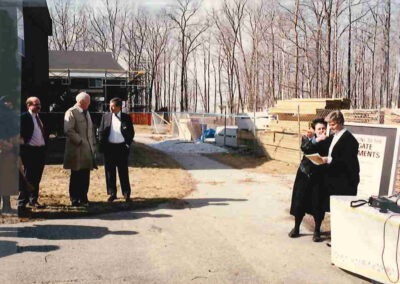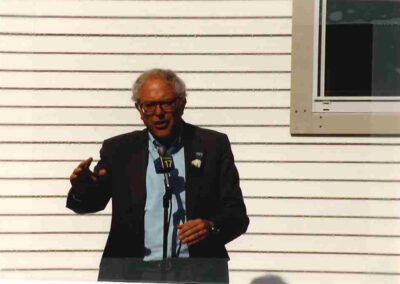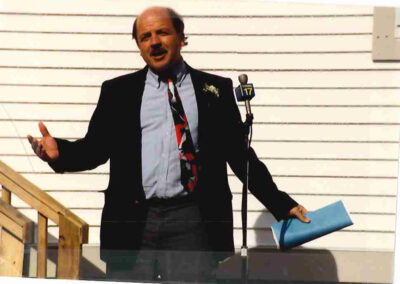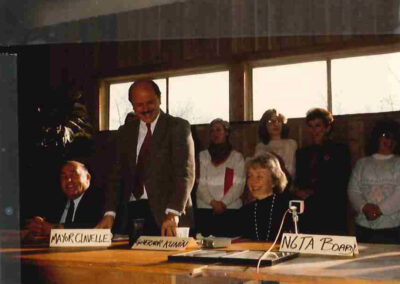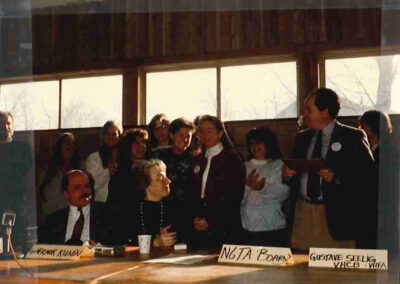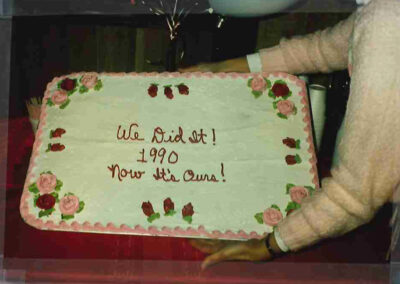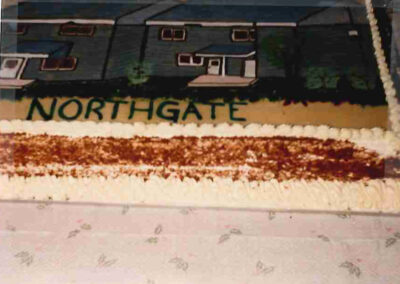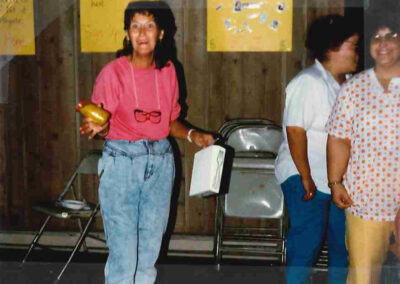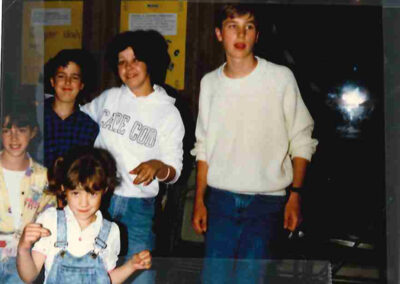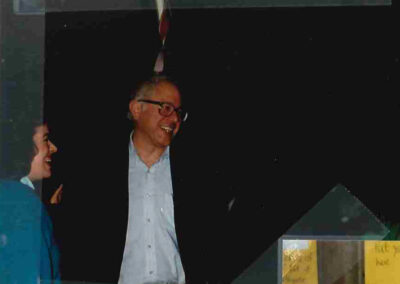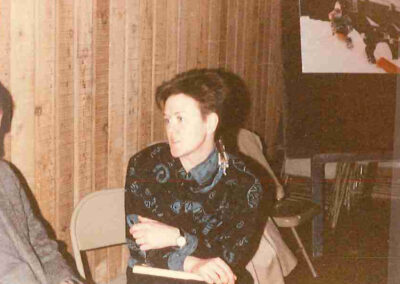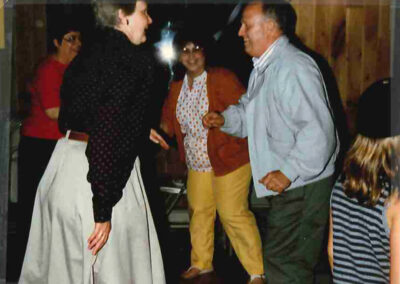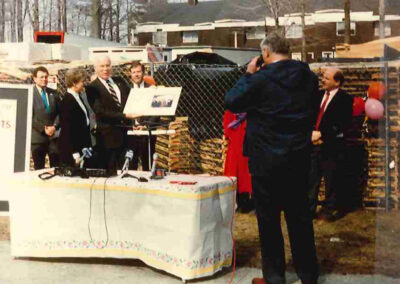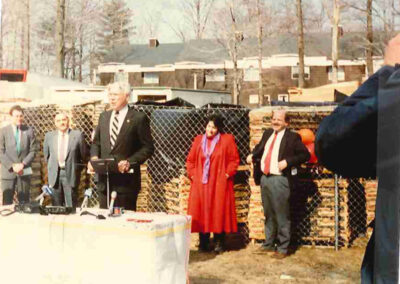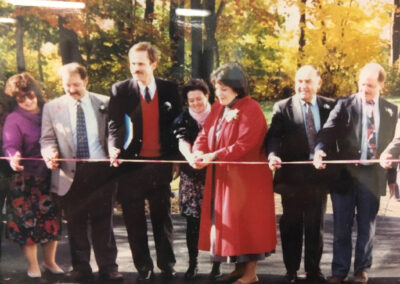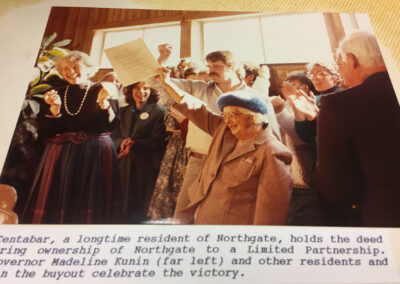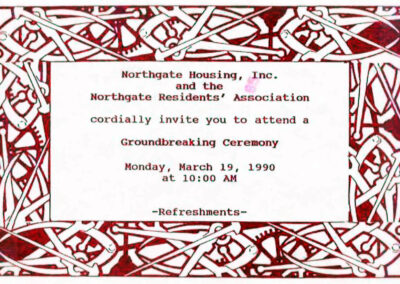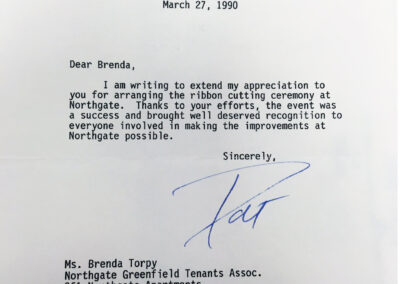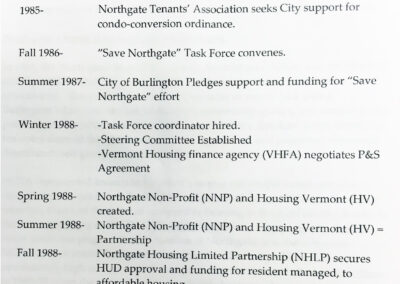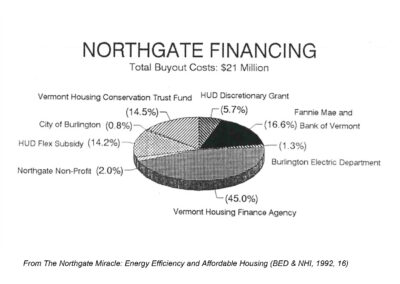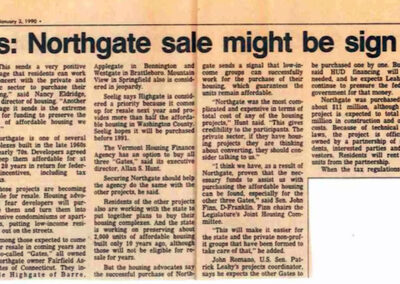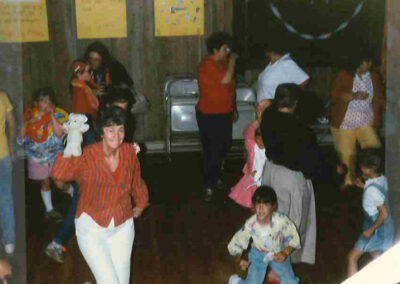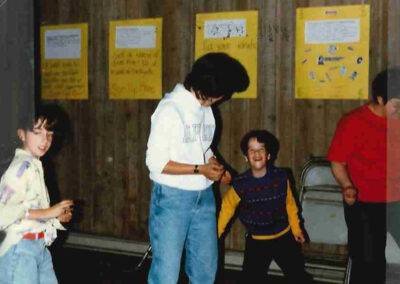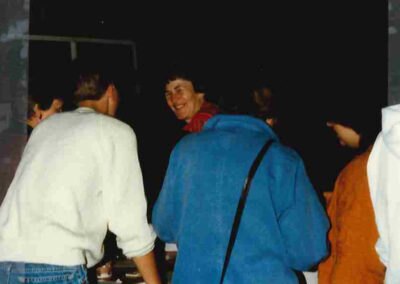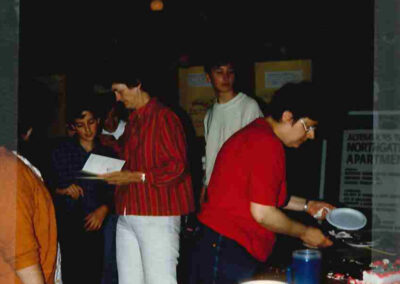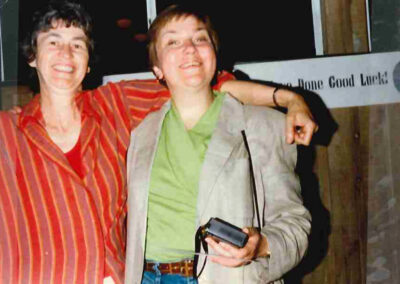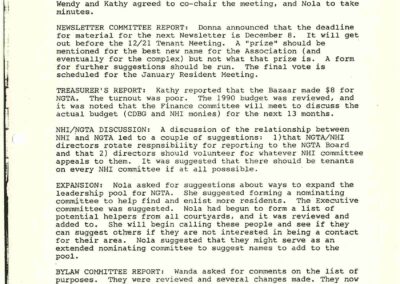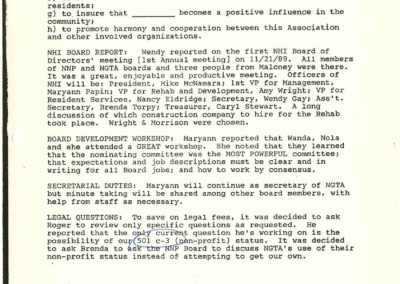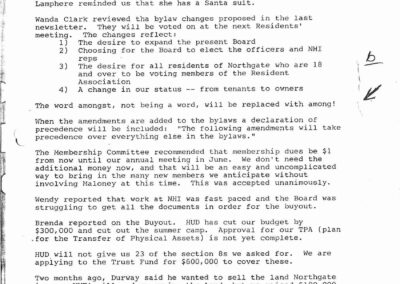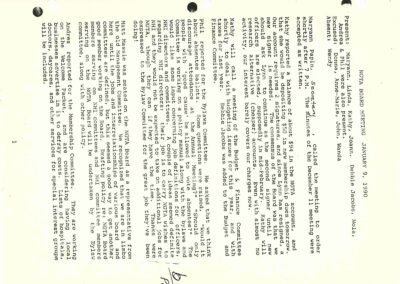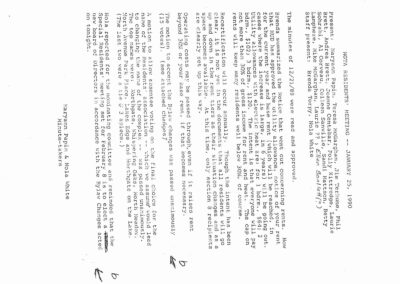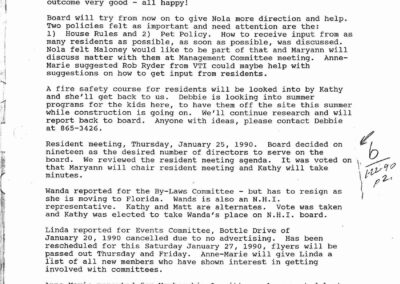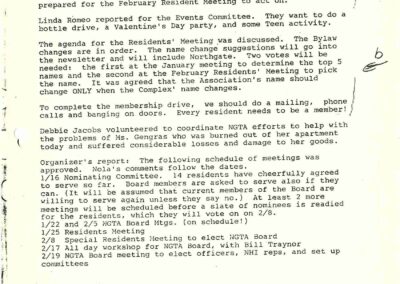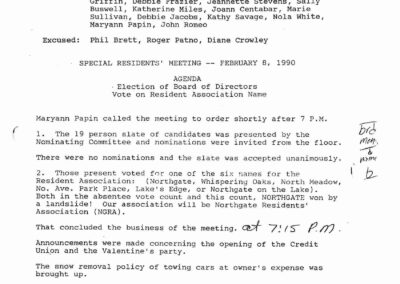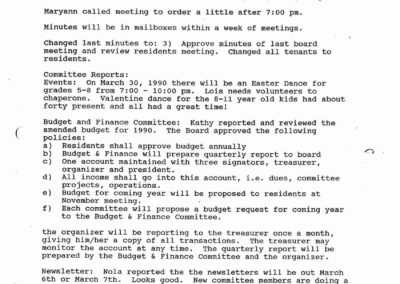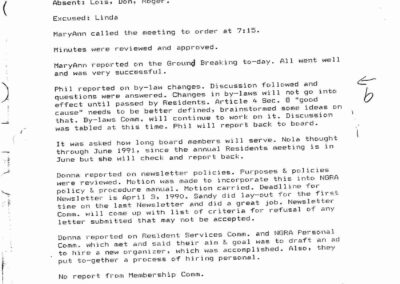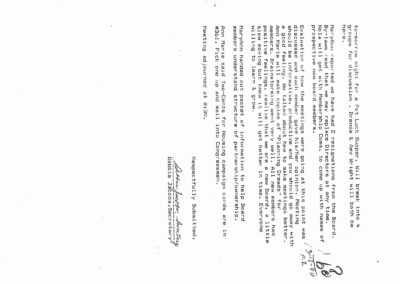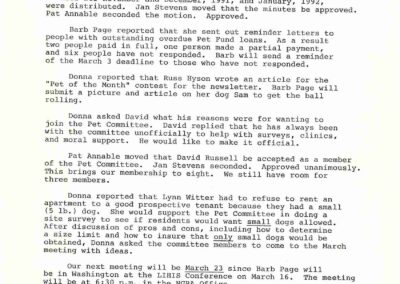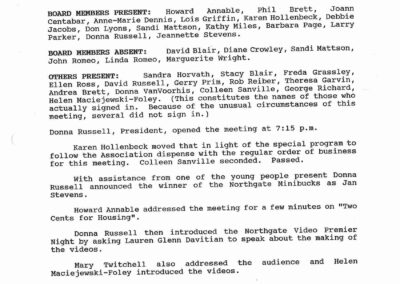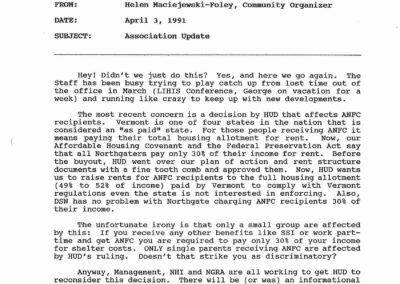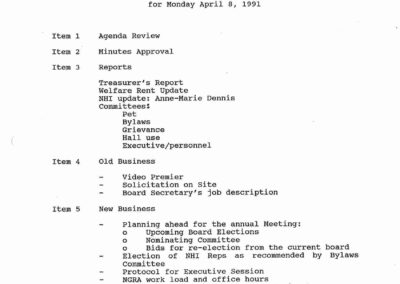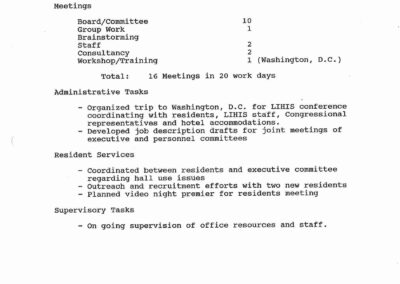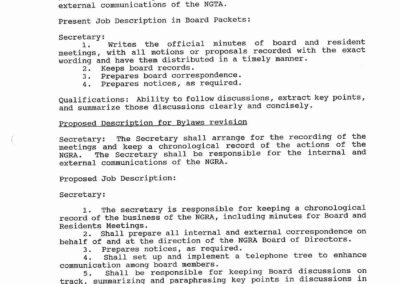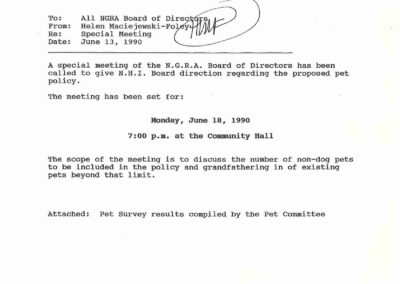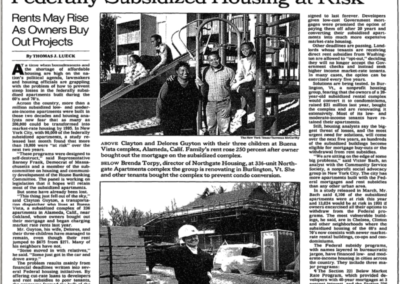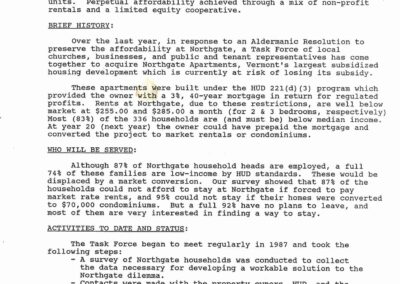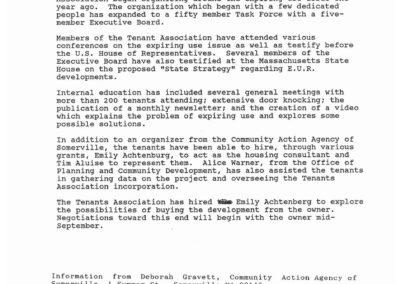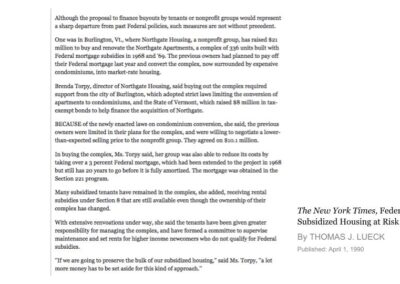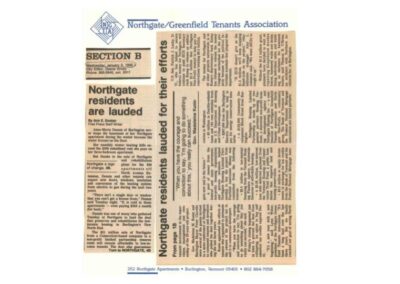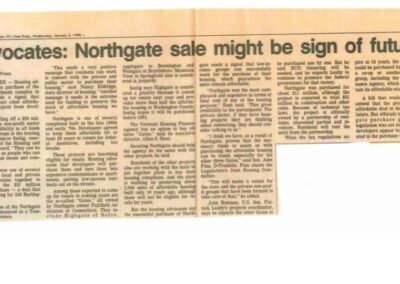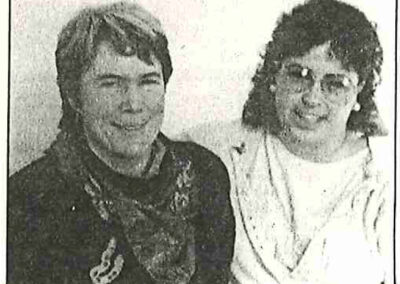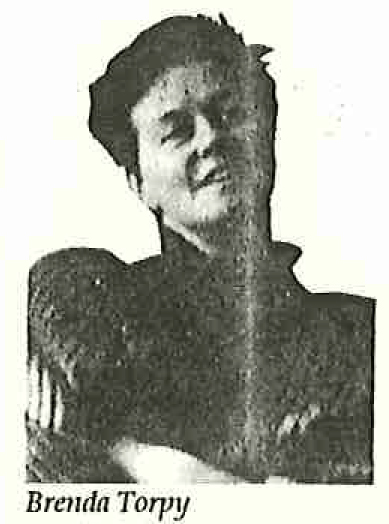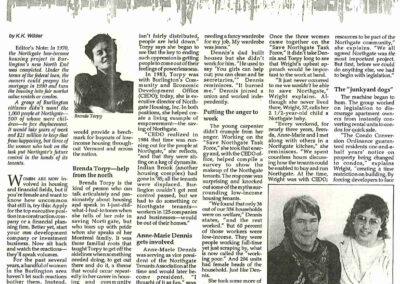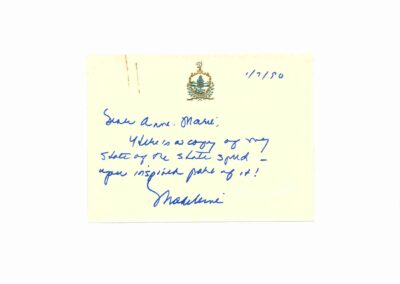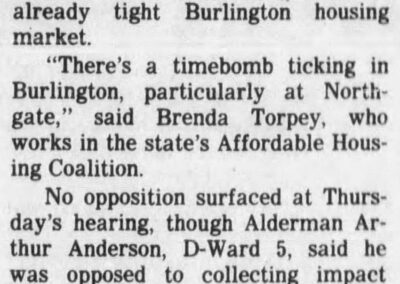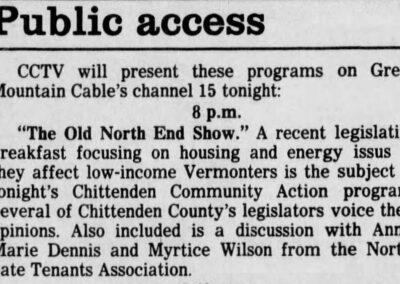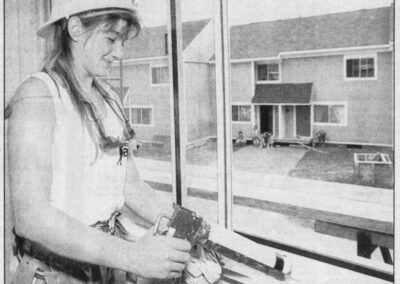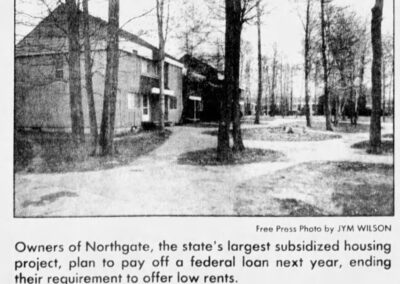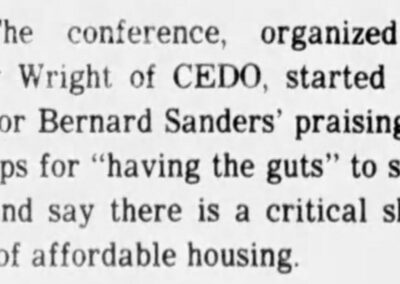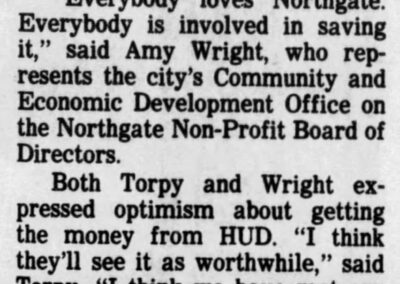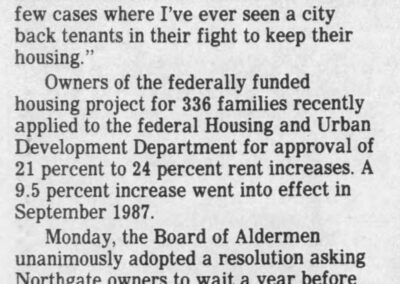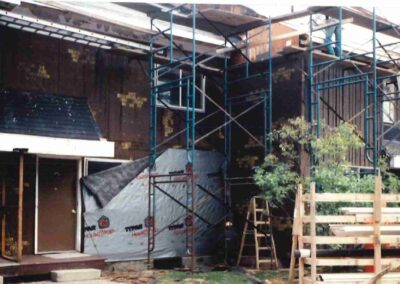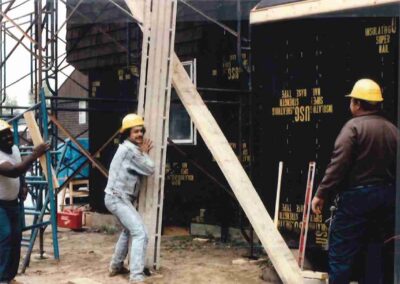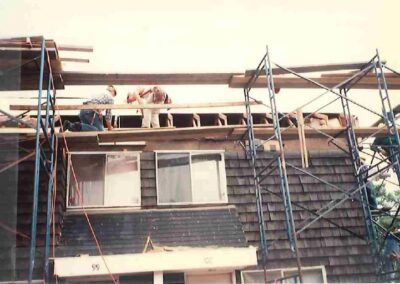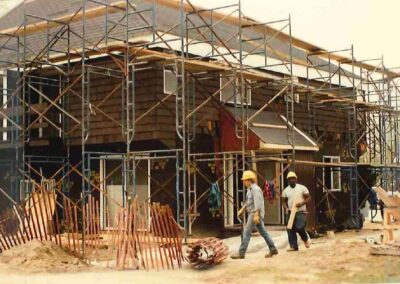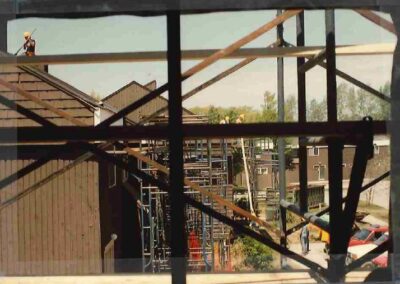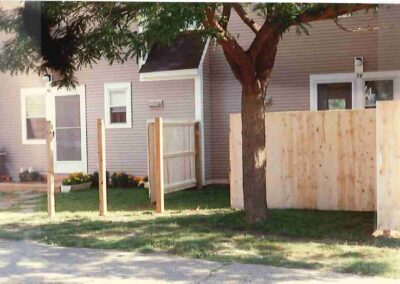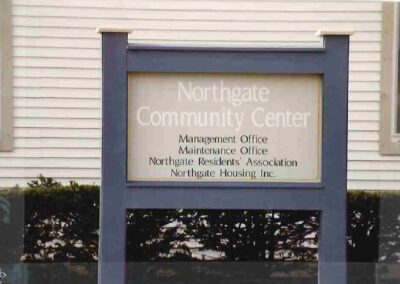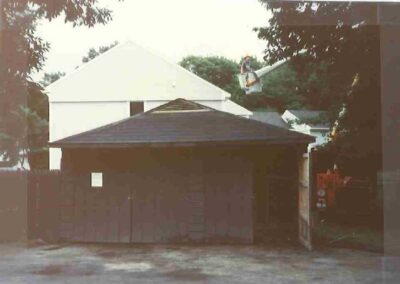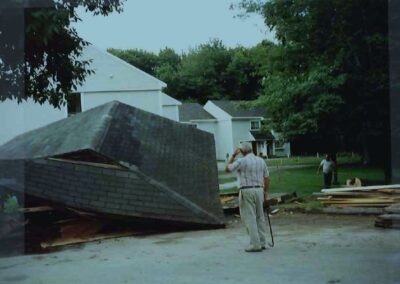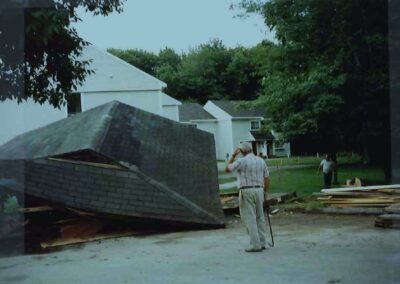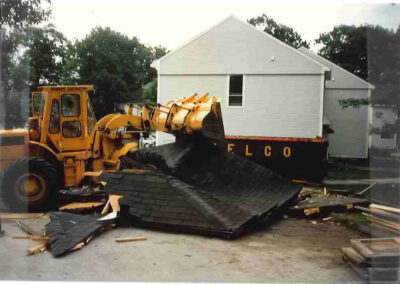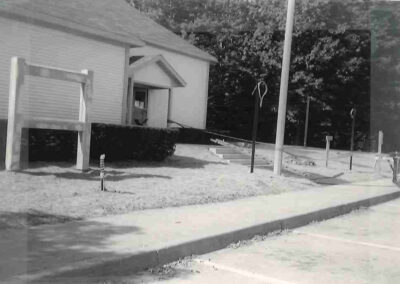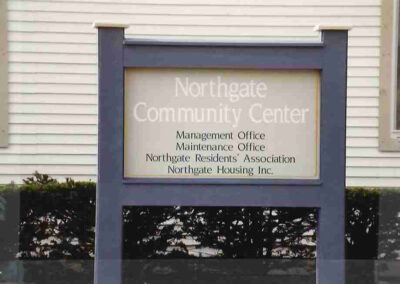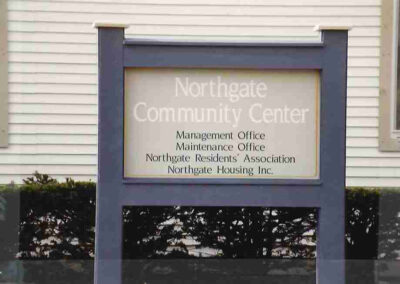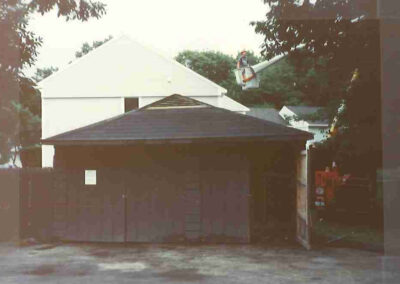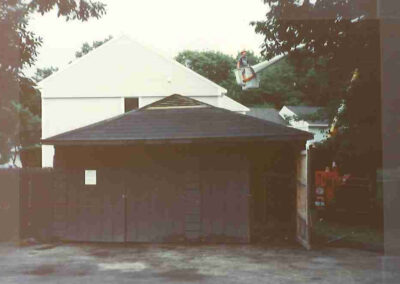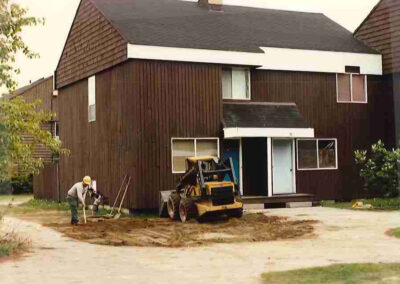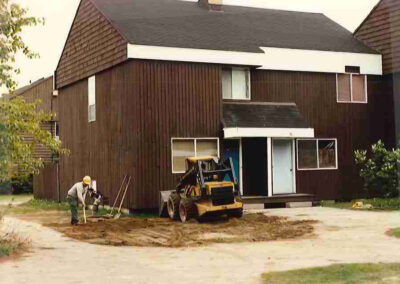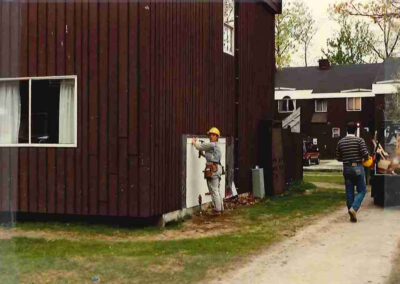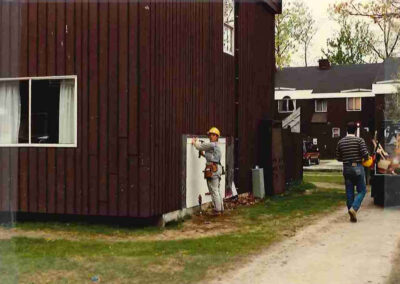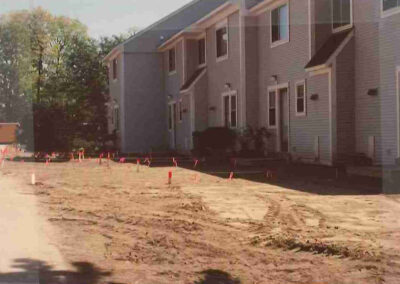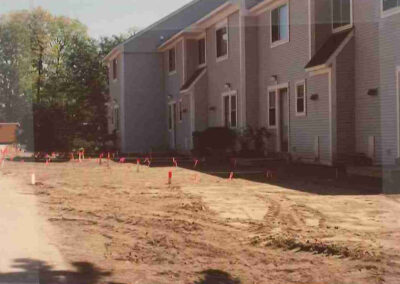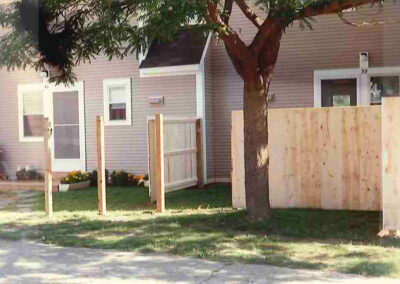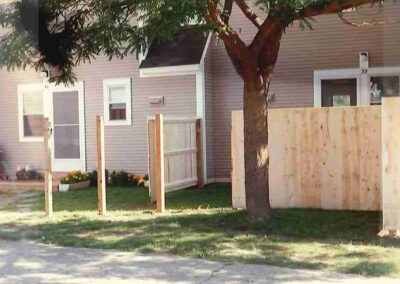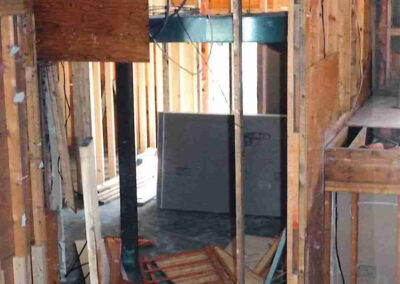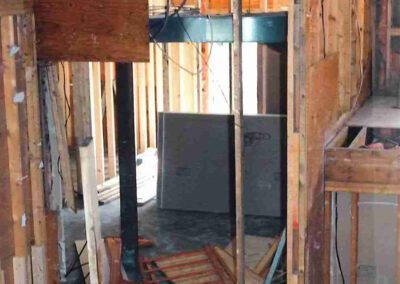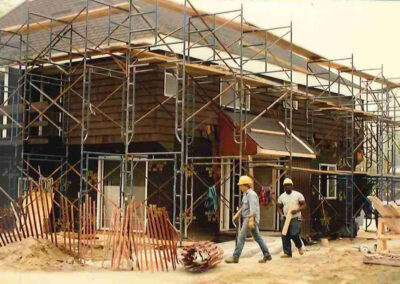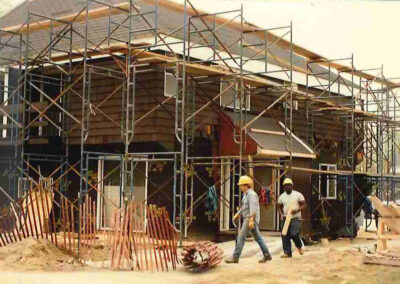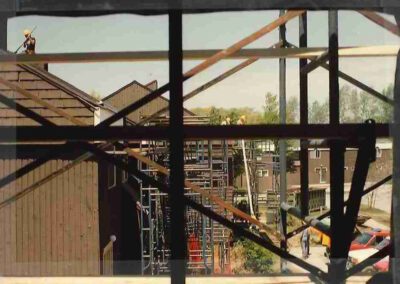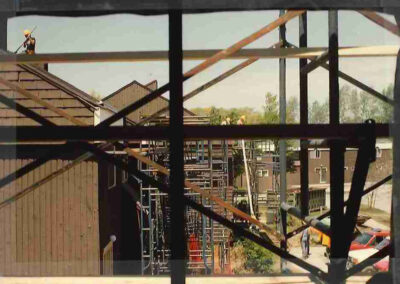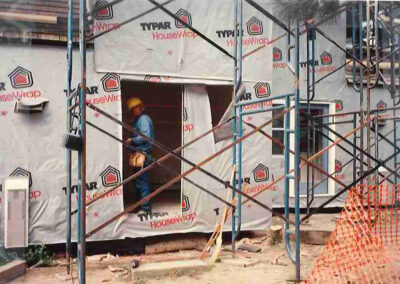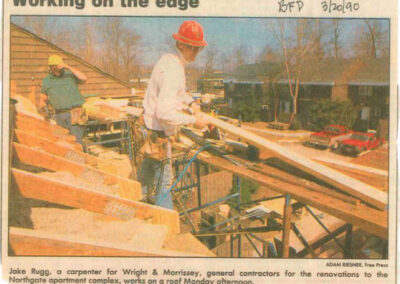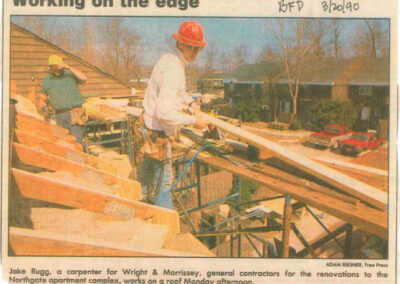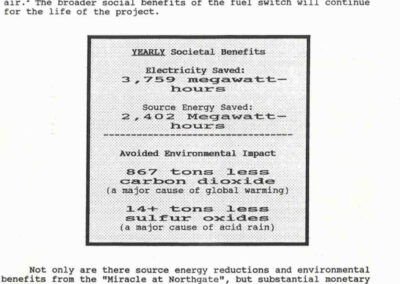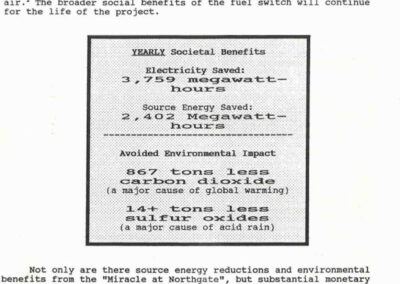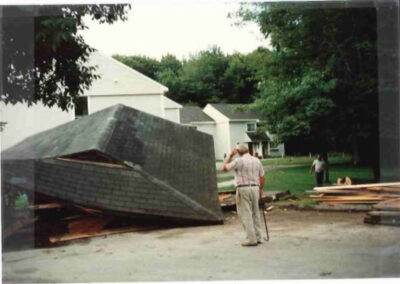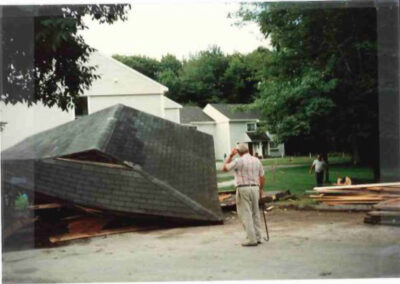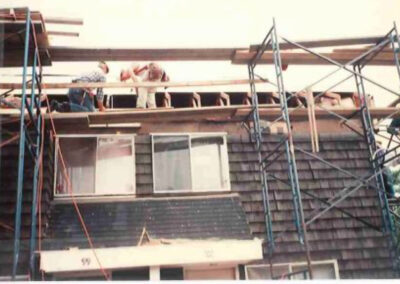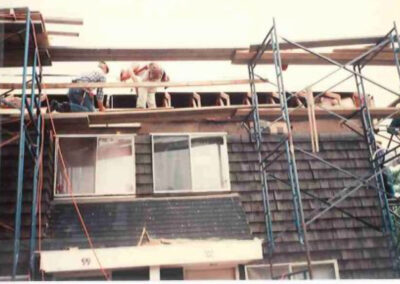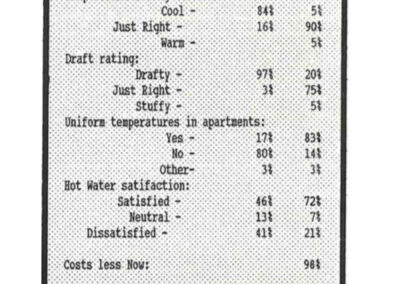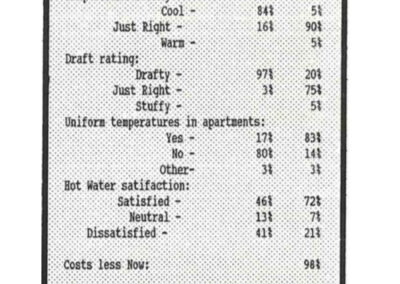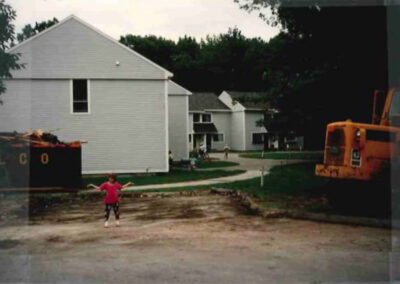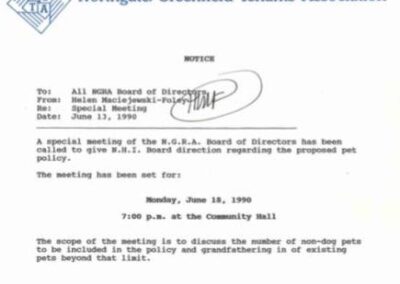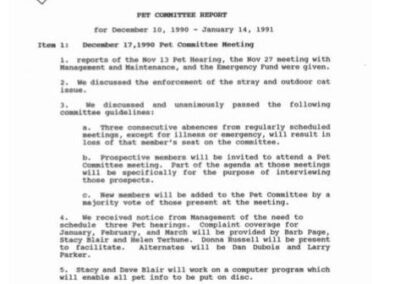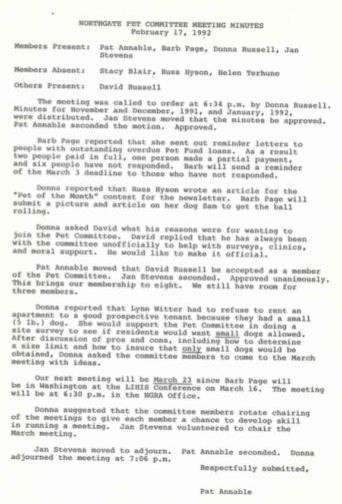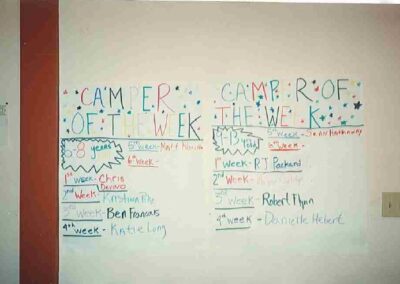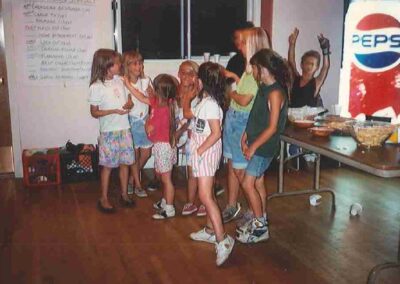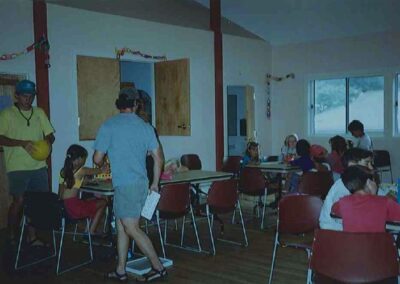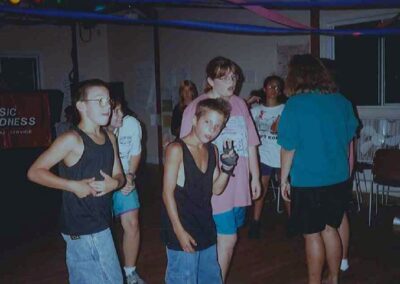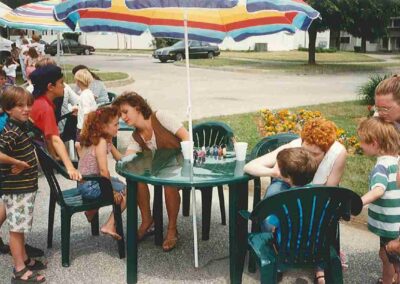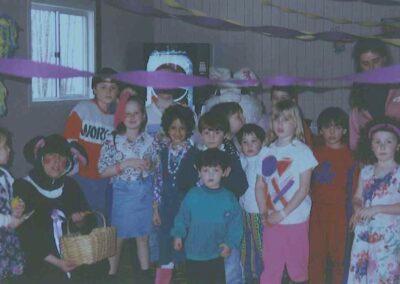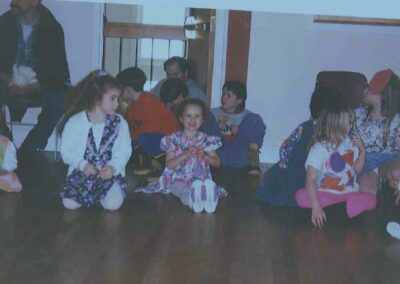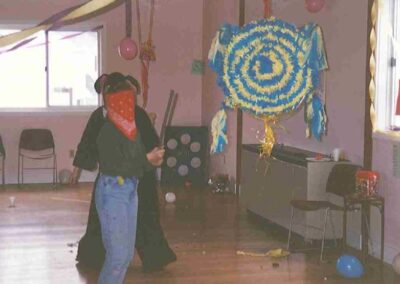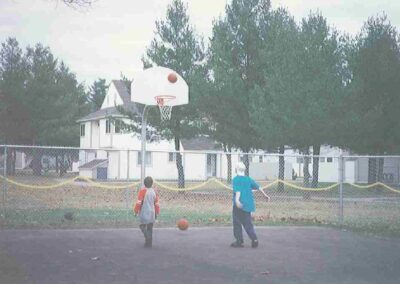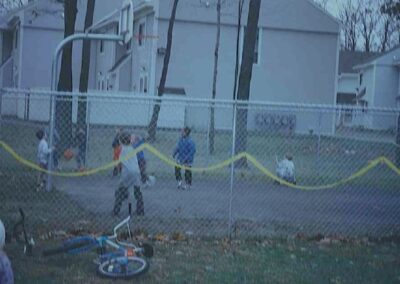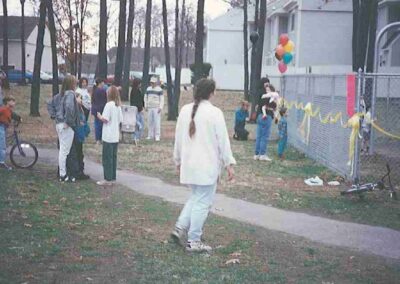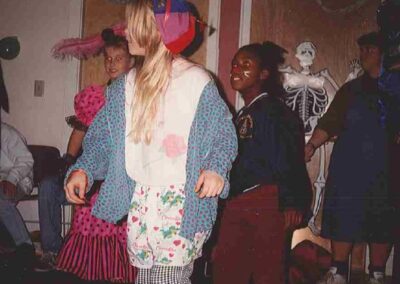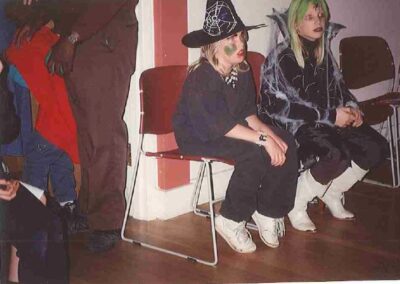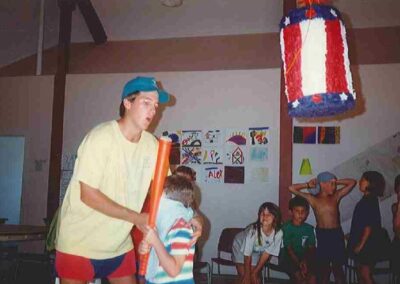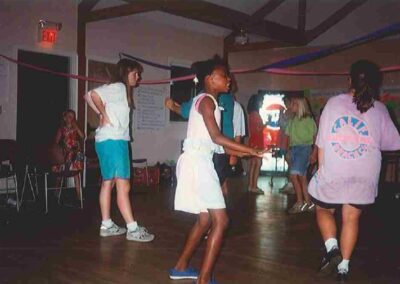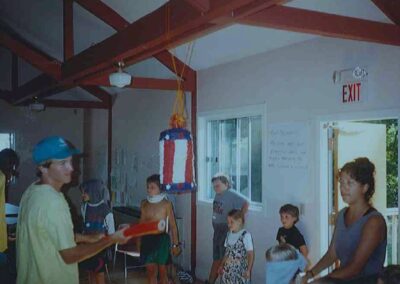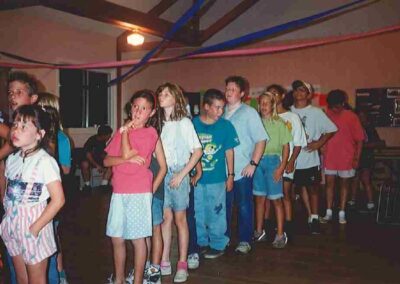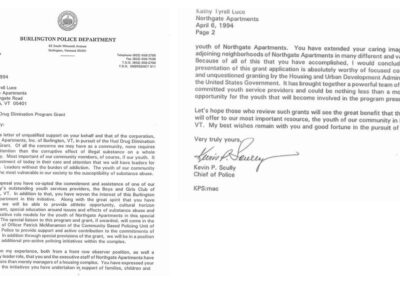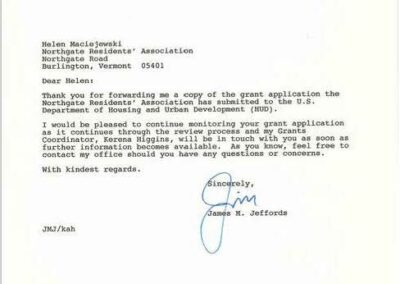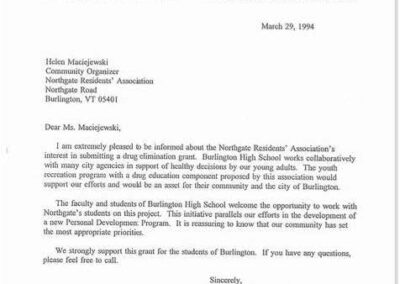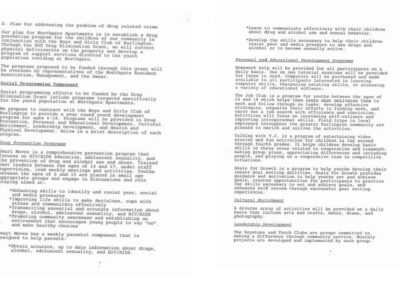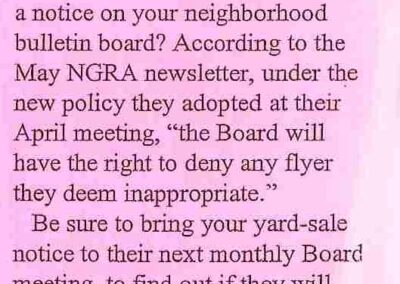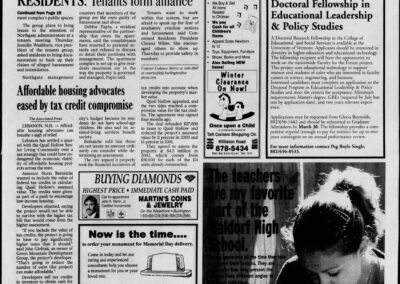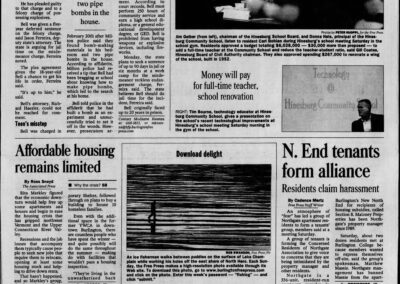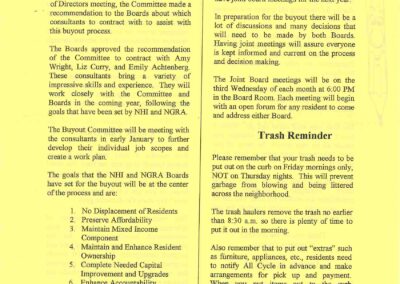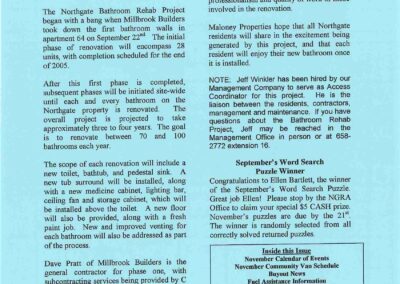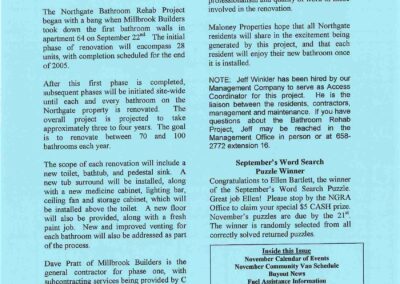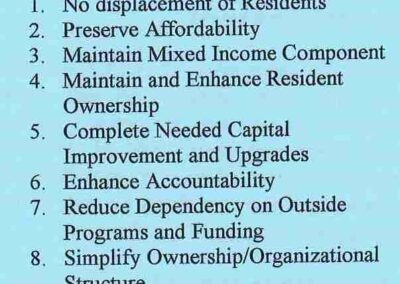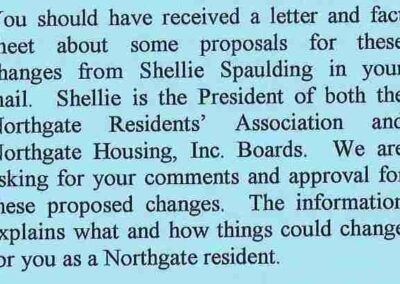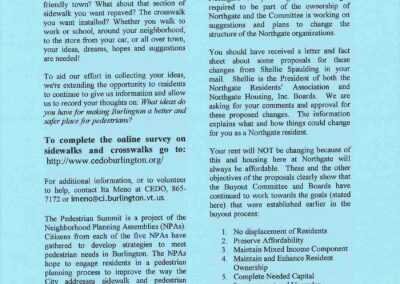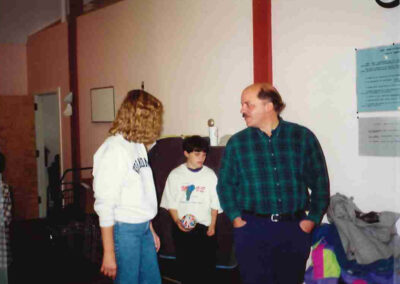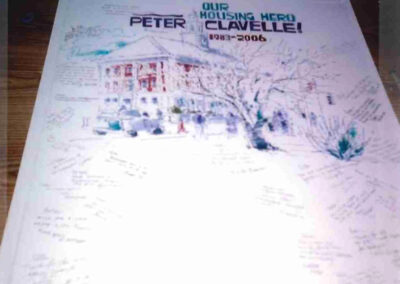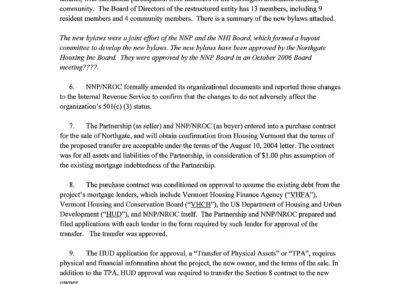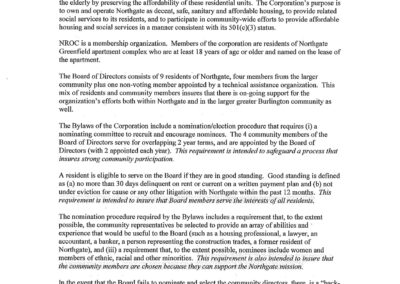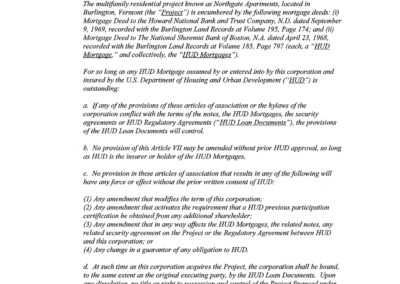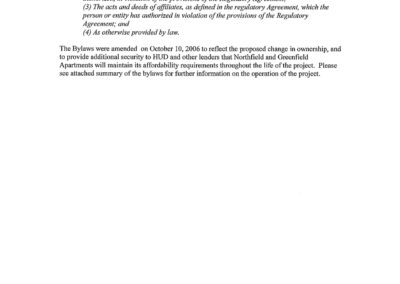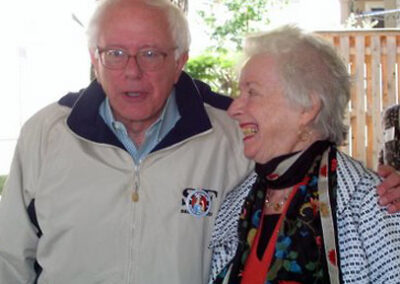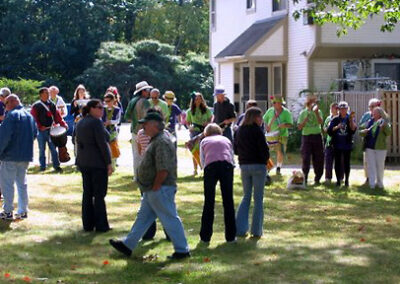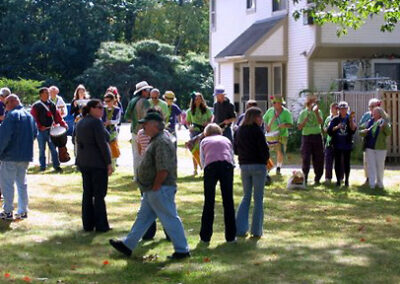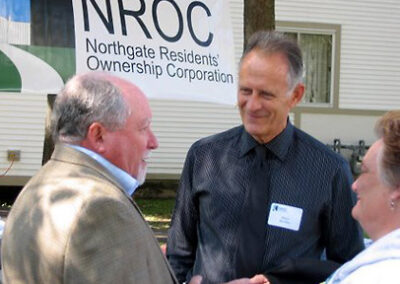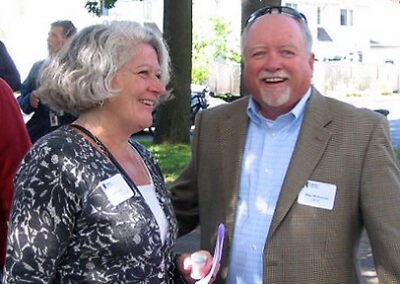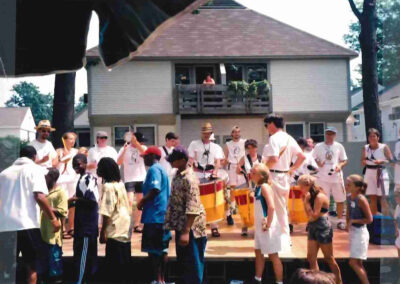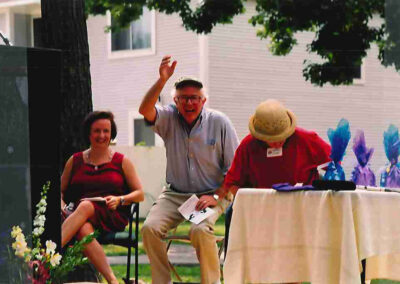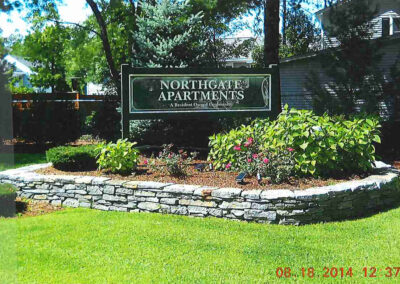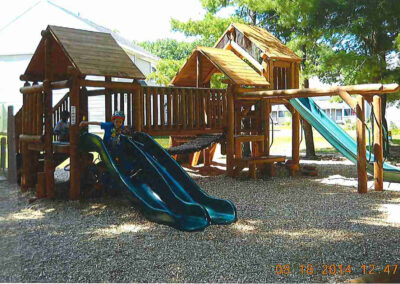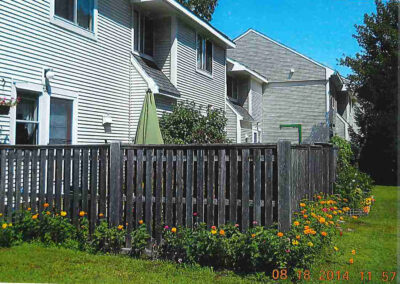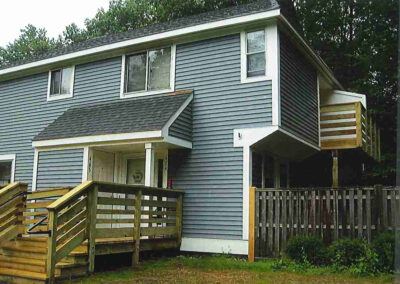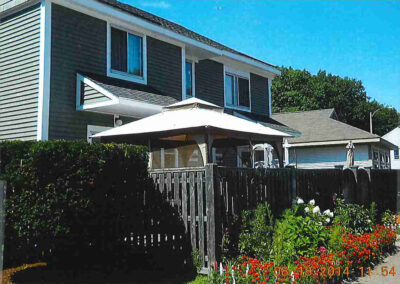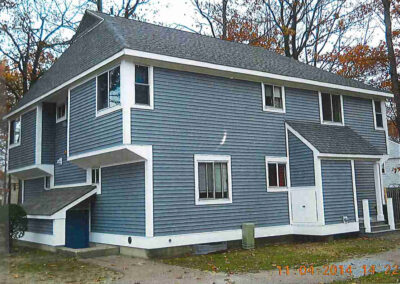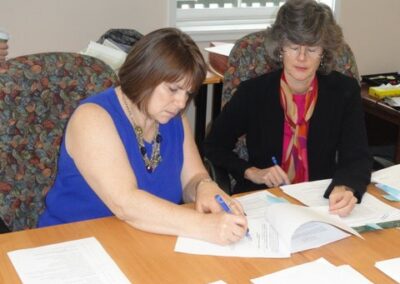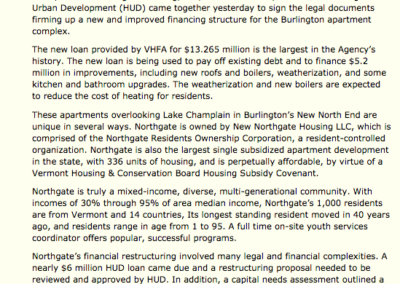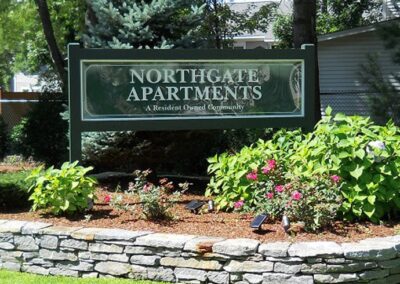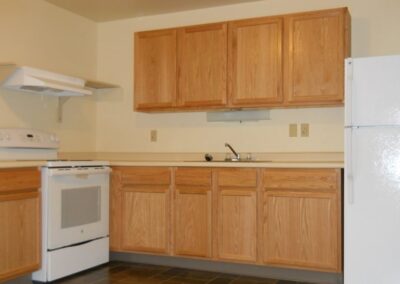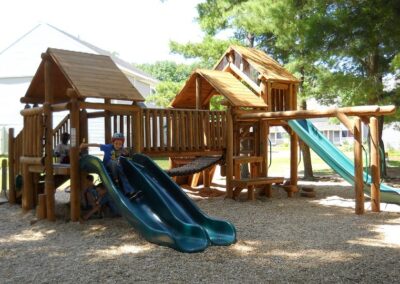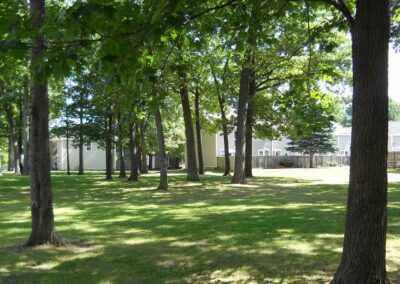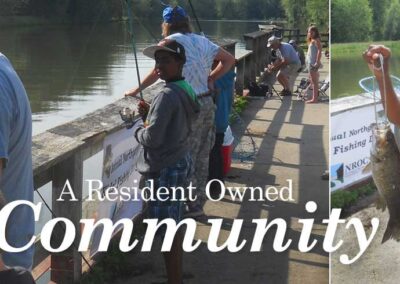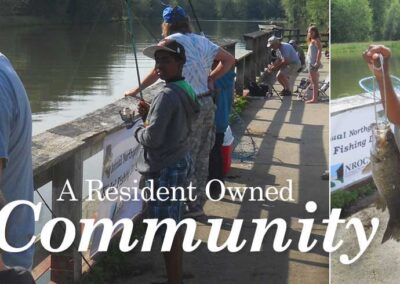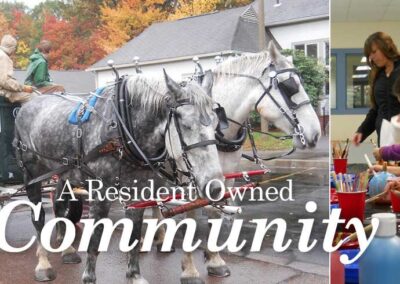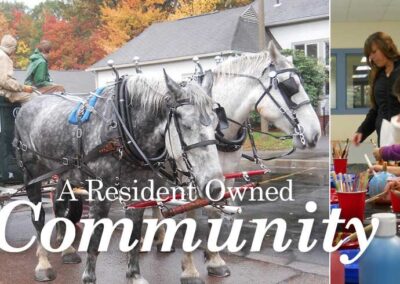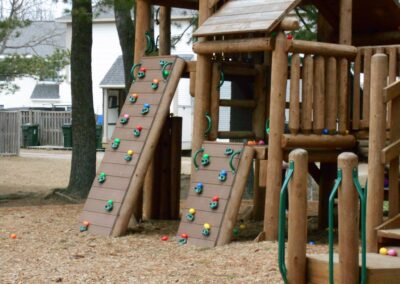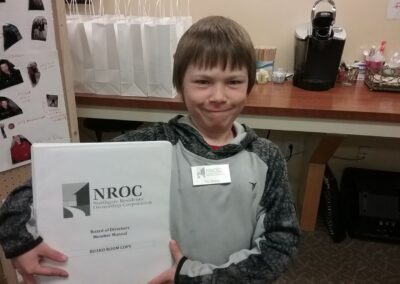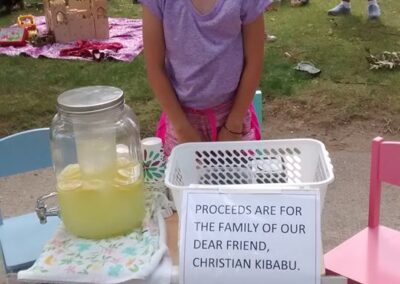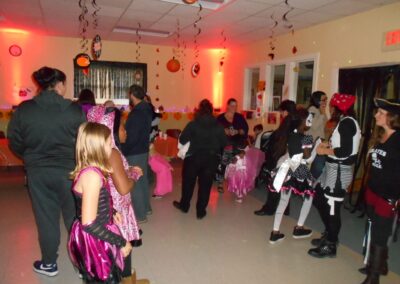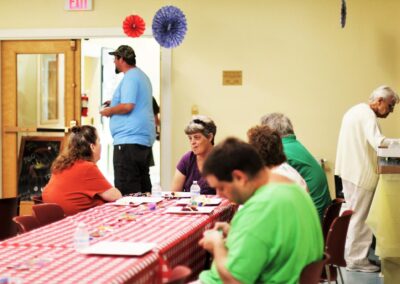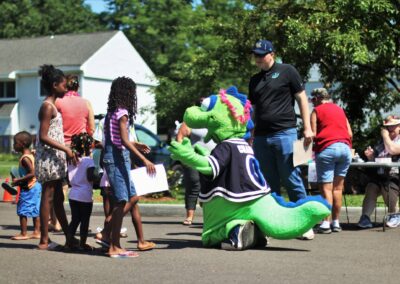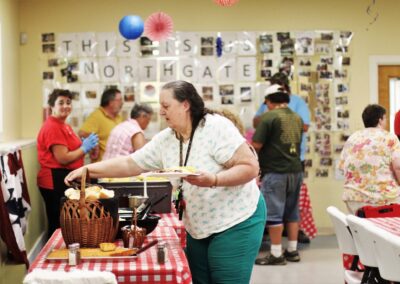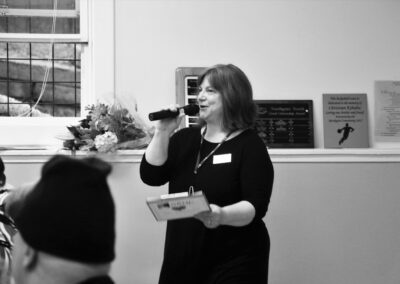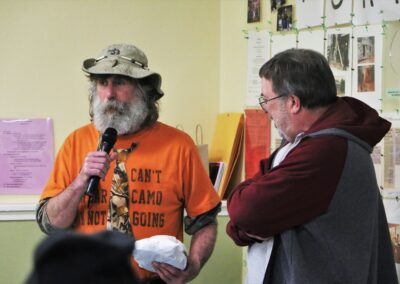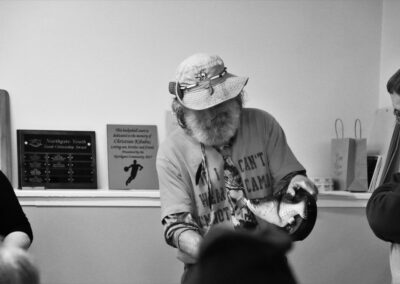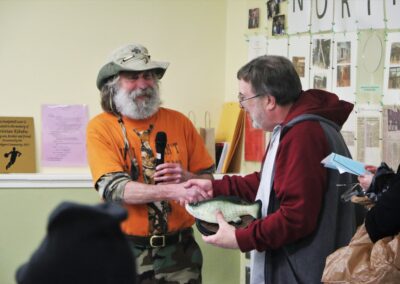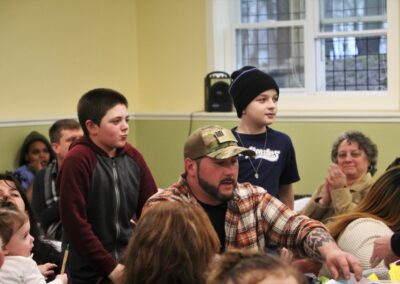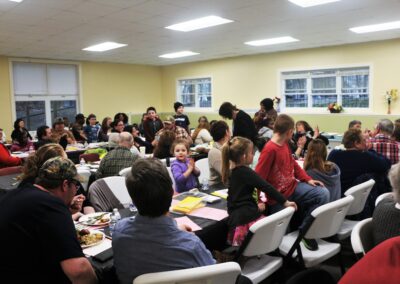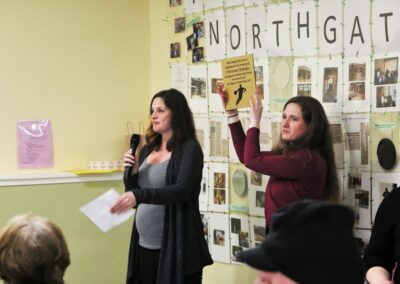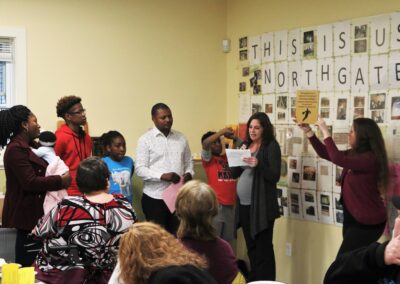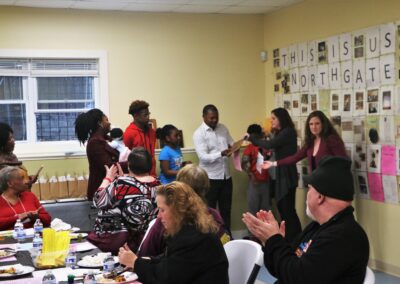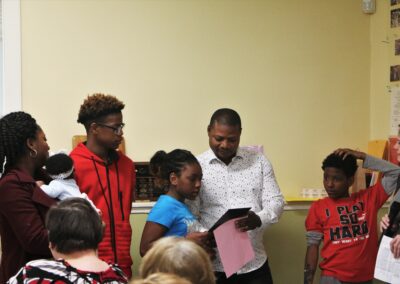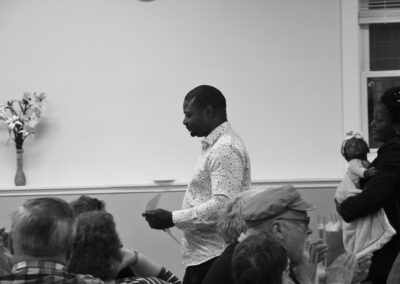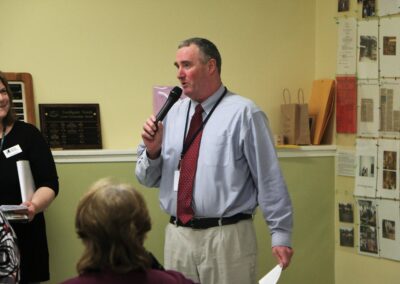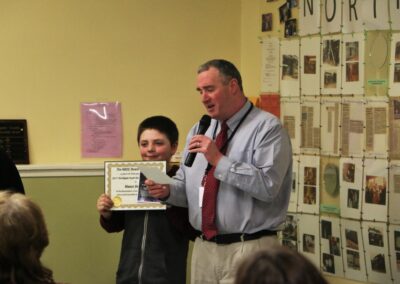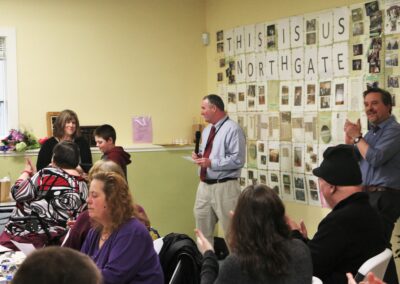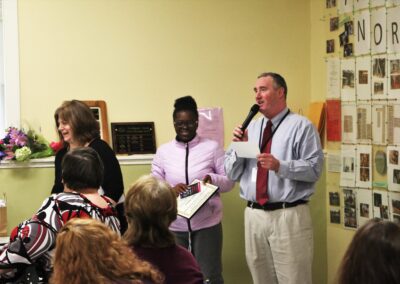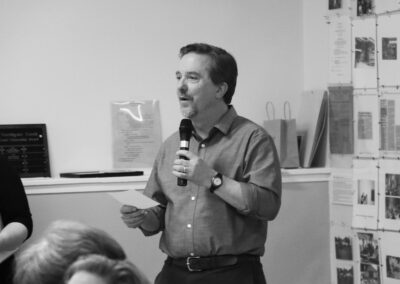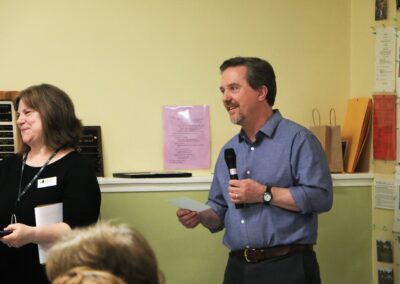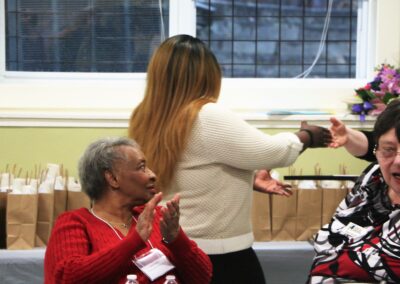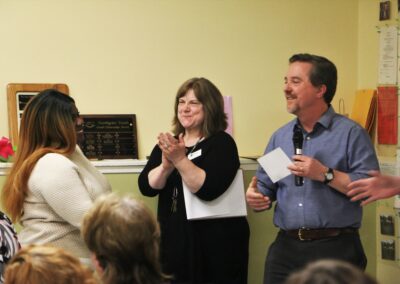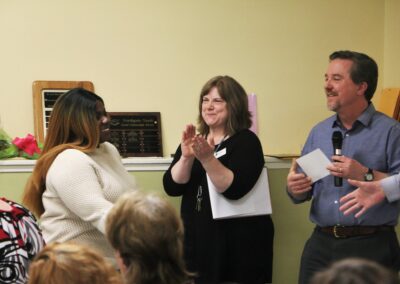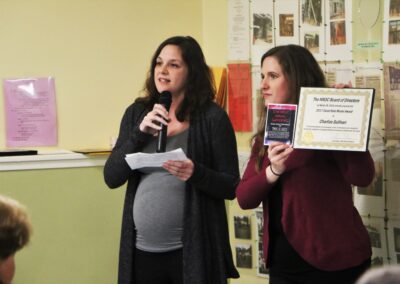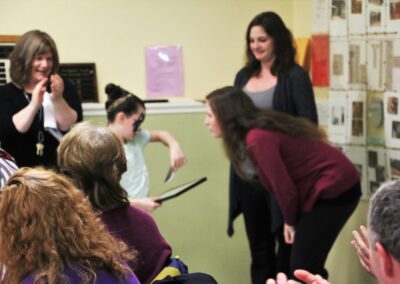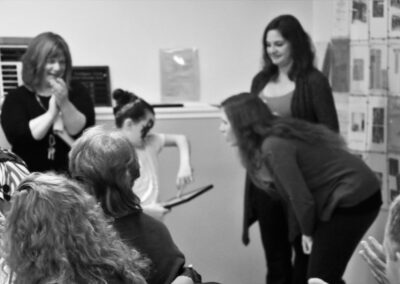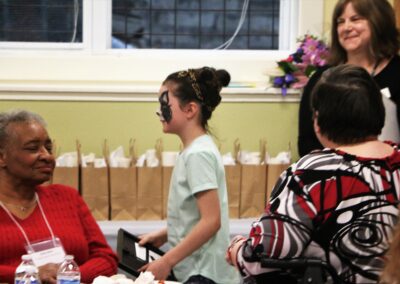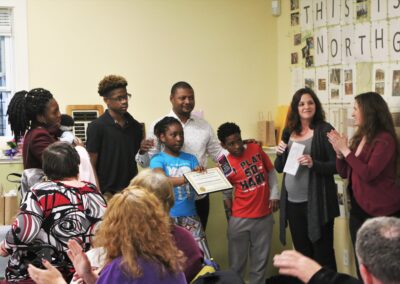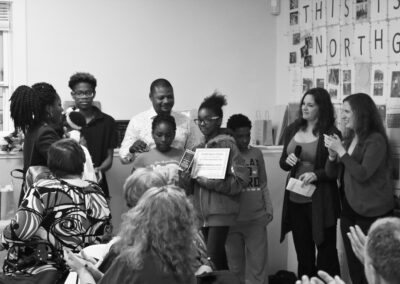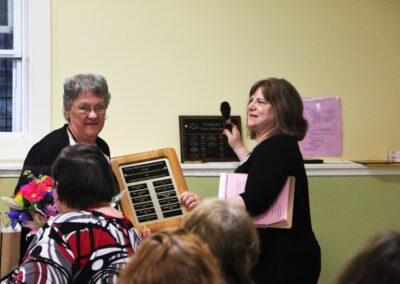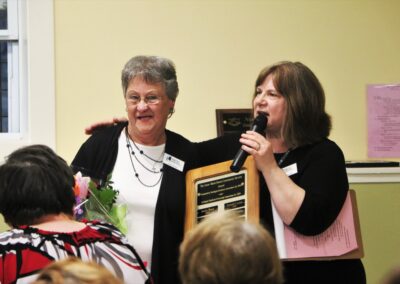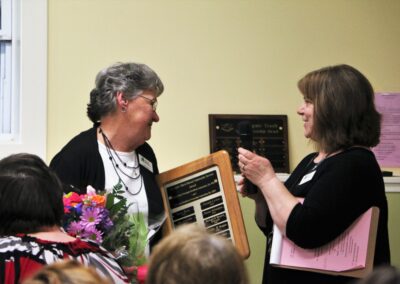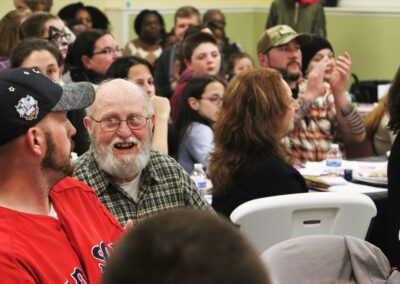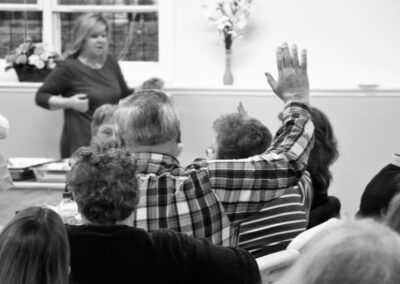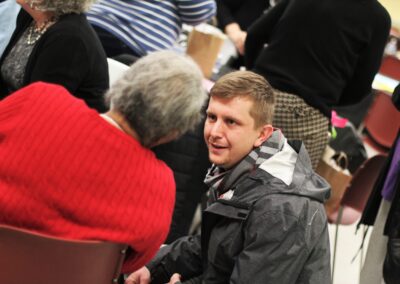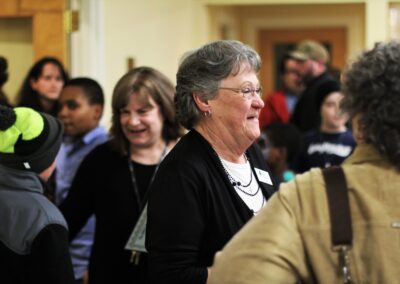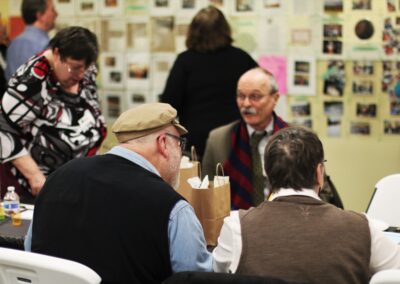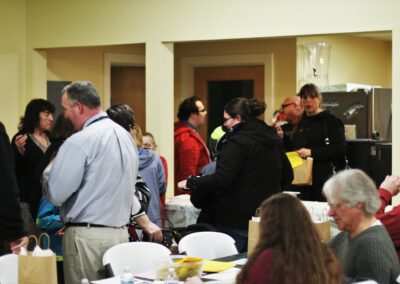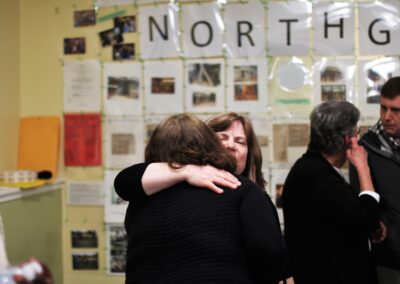The History of Northgate Apartments in Burlington, VT
Booming Economy and Housing Crunch Define the Late Sixties for Burlington
January 1967
In the late 1960s,as in rest of the U.S., Burlington and Chittenden County experienced an economic boom. Family incomes reached an all-time high, businesses and other employers were opening or expanding, job prospects were excellent, and the city ended the 1968 fiscal year with an unprecedented surplus. During this time, the demand for housing skyrocketed. In response, developers put up new apartments in and around Burlington, but not nearly enough to meet demand and maintain affordability. When developers, with the incredibly low mortgage rate assistance provided by federal housing aid, built Northgate, it opened in 1969 to become the largest affordable housing development in the state.
Burlington City Housing Inspector Asks For Rent Control
January 1968
With rental housing in such short supply, landlords could raise the rents beyond what many people could afford; they also had little market incentive to keep the apartments in decent condition. The city of Burlington’s Minimum Housing Inspector, Lloyd Preseau saw that the crunch was resulting in unsafe and unhealthy living conditions as well as excessive costs for renters. “There is not enough housing to go around and not enough nice housing to move into without paying an exorbitant rent.” He was inspired to call on the city to implement rent control, a cry that, although included in the city’s annual report for 1968, went unheeded by city officials.
Federal Subsidies Create The Largest Affordable Housing Complex in the State.
Federal Subsidies Create The Largest Affordable Housing Complex in the State
February 1968
Northgate was build a private developer between 1968-1969 using the HUD Below Market Interest Program (BMIR) authorized by the Housing Act of 1961. Northgate provided affordable housing to a mix of low, very low, and moderate income families.
In a nutshell, a government housing program made Northgate possible and later would trigger its crisis of survival. The Housing and Urban Development (HUD) Below Market Interest Program (BMIR)* program helped create affordable housing across the United States by giving low-interest mortgages to private developers. Given a 1.5% interest rate on the mortgage the developers agreed to offer affordable rents for the life of the mortgage. Beyond that, the program had no long-term federal affordability requirements. If Northgate’s developers had been able to cash in after year twenty as they tried to do, the Northgate of today would not exist.
*The policy details: The HUD Below Market Interest Program (BMIR) was authorized by the federal Housing Act of 1961. It stipulated affordability for a mix of low, very low, and moderate income families in exchange for a 1.5% interest mortgage, with the rate locked in for 20 years. After year twenty, owners had the option to pay off the mortgage and then could do what they wished with the properties.
Groundbreaking For Northgate
May 1968 | Series: The Beginning
First apartments at Northgate are developed by Fairfield Associates of Connecticut. Amidst the rapid community growth, Governor Phil Hoff, Burlington Mayor Frank Cain and others went to bat to assist in securing the federal funds needed for local housing development. A city in urgent need of affordable housing finally saw Fairfield Associates of Connecticut breaking ground on the construction of Northgate with plans to bring 140 town home-style apartments to the New North End. A second section called Greenfield added another 196 homes when it opened in 1970. Groundbreaking on site was May of 1968 and the first apartments were finished and occupied by that November. While many in the community saw this as a much needed housing for a population in need, it would become clear that the buildings were constructed quickly and cheaply implying an intention to flip them into market rate housing when the mortgage would come due.
State’s Largest Affordable Rental Community Fills Up Fast
October 1968
In October of 1968, Northgate’s first finished apartments opened for tours and inspection by eager potential tenants. The new construction and quiet, green setting of Northgate Apartments offered an appealing solution to the affordable housing shortage. Residents signed up quickly, in one month, all 140 apartments were rented and occupied.
Building Community at Northgate
October 1971
The Northgate Tenants Association was formed shortly after Northgate opened, with a short term goal of addressing concerns about children’s safety, vandalism and theft in the complex. Longer term, the members of the Northgate Tenants Association wanted to create a more cohesive community, with mutual support amongst neighbors and a sense of pride about the development.
Northgate Residents Remember the Early Years
November 1971
Northgate was rental housing and it was a close knit community where people made good friends, felt their children were safe, and worked together to make their community a home.
Buildings in Disrepair and Disputes Leave Northgate Tenants to Battle Stigma
January 1972
Throughout the 70s and into the 80s Northgate suffered from stigmas that came partly from stereotypes about residents who live in “affordable housing”, but also from the reality of a poorly maintained development with rising incidents of crime. The buildings at Northgate began to fall into disrepair very quickly, in part because they were not built to last beyond their 20 year mortgage. The state of the complex showed that Northgate’s owners were unconcerned with the residents’ safety and wellbeing or the neighborhood’s quality of life.
Housing That Wasn’t Built To Last and Tenant Complaints Go Unheard
June 1976
In the years after Northgate opened, its now 336 households encountered two major problems: high energy costs and poor management and maintenance. Because the buildings were heated with electricity, soaring energy costs in the 1970’s drove winter heating bills as high as, or even higher than the rents. Meanwhile, quick shoddy building and poor management of the property led to building systems falling into disrepair. Residents complained repeatedly to the owners and the City of Burlington with no results.
Tenants Organize to Stand Up to the Owners
July 1976
Living and working under Fairfield Associates of Connecticut, Northgate’s first owners, was not easy. Resident complaints about needed repairs and maintenance were consistently ignored. Pro-tenant property managers like Lynn Witter (1979-82) wanted to do right by the tenants but found their hands tied by the owners’ indifference and outright illegal harassment. Fairfield Associates intimidated residents who complained by sending threats of eviction – up to 60 a month! Tenant Anne-Marie Dennis recounted the time when Fairfield employees were caught breaking into a home with the aim of hiding a potentially fatal code violation by replacing faulty fire extinguishers and smoke detectors after a kitchen fire.
Tenants realized they had to come together to defeat these tactics. They enlisted the help of Vermont Legal Aid (VLA), an organization with a strong history of advocating for tenant rights. With VLA’s support, Anne-Marie Dennis and other tenants organized their neighbors and were able to take the owners to court, bringing a series of lawsuits in the late 70s.
A Community Worth Fighting For
February 1980
Despite the challenges, Northgate was in many ways a wonderful home for working families. Located close to the lake and the bus line, it also offered a real community spirit. Tenants came together regularly for family-friendly events, meetings, and celebrations.
A New Political Tide in Burlington Gives Tenant Efforts a Boost
February 1981
1981 brought a new infusion of energy at Northgate: Bernie Sanders was elected Mayor of Burlington and the tenants formed the Northgate-Greenfield Tenants Association (NGTA), building on prior tenants’ groups. The two events were not coincidental. The socialist candidate’s campaign for mayor drew Burlington’s low-income residents and community groups into a political process that had historically excluded them. Sanders’ upset victory for mayor–by just 10 votes–showed that grassroots organizing paid off, propelling these previously disenfranchised groups to political action. The seeds for the NGTA were planted with the series of Vermont Legal Aid and tenant led lawsuits in the late 70s. By 1981, residents were bringing their concerns to City Council and City Hall with their new mayor’s support. As well as educating and organizing residents, the NGTA deepened their community spirit with social activities at Northgate.
New Help from City Hall With Sanders as Mayor
February 1983
With Bernie Sanders–a self-described Democratic Socialist–in City Hall, many new progressive institutions were launched. . 1983 was a particularly busy year. He created Burlington’s Community and Economic Development Office (CEDO) to engage citizens to address their own needs and support them with funding and technical assistance. CEDO enabled Mayor Sanders and his administration to direct federal dollars to their political priorities. In an effort to increase participation in local government and improve communication within neighborhoods, CEDO set up Neighborhood Planning Assemblies in each ward. Permanently affordable housing was high on the Sanders’ administration agenda, as the Reagan administration cut federal funding and gentrification once again advanced in Burlington. CEDO staff founded the Burlington Community Land Trust (BCLT) in 1984 to create more affordable and low income housing in Burlington. BCLT is now the Champlain Housing Trust, it was the first municipally supported community land trust in the country and in 2019 remains our country’s largest Community Land Trust.
Leadership Learns That Northgate Is In Peril
April 1984
As tenants and city officials started to solve the existing problems at Northgate they identified a big new threat – the biggest one. To lower the property’s exorbitant heating costs, CEDO staff with a young and motivated Brenda Torpy in the lead, and the Burlington Electric Department arranged to have Northgate’s attics insulated in 1983. In the process they learned that the private property owners would have the right to pay off their HUD mortgage in just 6 years. Nearby Indian Brook apartments – another HUD affordable housing project – had just been converted to market-rate rentals and 50 families had been displaced. If Northgate was converted to private housing, millions of dollars of public financing would be lost and over 1300 people would be priced out and forced to leave their homes. In the face of this huge threat, the City of Burlington allocated funds to hire a Northgate organizer based at CEDO. Tenants re-energized the Northgate-Greenfield Tenants Association, and ultimately convened a city-wide Save Northgate Task Force.
Saving Northgate Starts with a Few People And A Good Idea
February 1986
The city knew they needed to preserve these 336 affordable housing units, they just didn’t know how yet. Some ideas about homeowner cooperatives were circulating and at the same time leadership knew there was a groundswell of community leadership from within Northgate.
A Powerful Partnership – People and Political Will
April 1986
Resident Anne-Marie Dennis moved up in leadership of the Northgate-Greenfield Tenants’ Association to become Vice President and eventually President. It was on Mayor Sanders’ agenda to keep Northgate affordable, and in 1986 Dennis, with help from CEDO, crafted a survey to understand the demographics of the people of Northgate to see if they wanted to act on preserving Northgate as affordable housing. Dennis first met with Bernie Sanders on behalf of the NGTA in a Northgate kitchen. The City and Mayor continued to provide critical support and resources after the survey results were in and a Save Northgate effort started.
Mayor Bernie Sanders Stands Up for Northgate
May 1986
Key CEDO housing aide, John Davis recalls Sanders confronting Northgate’s owners in a 1986 meeting “Bernie pounded his fist on the table in his office and told the owners, ‘Over my dead body are you going to displace 336 working families. You are not going to convert Northgate into luxury housing.’” Sanders has continued his active support of Northgate and affordable housing since fighting alongside the residents when he was Burlington’s mayor.
Northgate Tenants Surveyed The City Learns Who Lives Here
January 1987
In January 1987 members of the Save Northgate Task Force went door to door, delivering the Northgate Tenants Survey with a personal explanation to every household. Eighty-five percent of the residents completed the surveys — an unheard-of rate! The results knocked down stereotypes about Northgate, showing that the residents were engaged and deeply invested in their homes and the neighborhood. Importantly, the surveys showed residents were primarily low-income working families, many with young children, who depended on the affordable rents for their economic stability. The Northgate Task Force outreach and results galvanized residents and the city to see the risk they all faced and the need to band together. With the help of community and municipal advocates, the people of Northgate decided to organize again, this time to save their homes.
The ‘Save Northgate Task Force’ Works on a Plan to Buyout Northgate Owners
February 1987
In 1987, With support from the city and the state, Northgate tenants and the Save Northgate Task Force embarked on a two-year campaign to acquire Northgate and preserve its affordability. The Save Northgate Task Force — formed thanks to an Aldermanic (now known as The City Council) Resolution to preserve Northgate’s affordability — included representatives of local churches and businesses, the public and tenant advocates.
The Task Force work was to connect with the residents and, through deep grassroots organizing, build support for the project among Northgate’s owners, HUD, the Vermont Congressional delegation, and within the Tenants Association. The Task Force also tackled the nuts and bolts of making a purchase happen: legal research, property appraisal, forming a nonprofit, and securing major funding. In early 1988 the Task Force hired a full-time Development Coordinator, and negotiations to purchase Northgate began that fall.
Save Northgate Political Effects: A City Ordinance Protects Affordable Rentals
March 1987
Through the efforts of Northgate residents with the Save Northgate Task Force, the Sanders’ administration, the Progressive Coalition, and Allen Gear a key Republican Ward 4 alderman, the then Board of Aldermen – today known as the City Council – passed an ordinance to restrict condo conversions. The CEDO/NGTA survey results had shown the aldermen and that Northgate families would have nowhere to go should these apartments become market-rate condos. The ordinance made it very difficult for a developer in Burlington to convert existing affordable housing to more expensive condominiums and placed powerful anti-displacement restrictions on properties like Northgate to preserve them for lower- and middle-income people. The new law, still in effect today in 2019, directly assisted the Save Northgate effort as well as protecting the affordability of other rental housing in Burlington.
Save Northgate Political Effects: Northgate’s Campaign Inspires Statewide Advances
June 1987
Northgate was again in the spotlight when the legislature created the Vermont Housing and Conservation Board (VHCB) in 1987, in response to development pressure on affordable housing, agriculture, and natural lands across Vermont. Gus Seelig, VHCB’s founding director, emphasizes that VHCB was formed with Northgate’s peril in mind and that VHCB recognized that resident participation was key to the success of the Save Northgate effort. Northgate received VHCB’s first loan, and its example underscored the principle that public dollars must continue to ensure long-term benefits to the public. Because of the experience at Northgate, today, VHCB funds require a commitment to permanent affordability. This investment has served the state well. Northgate is a national model of success.
Tenants and Elected Officials Together Defeat a Rent Hike
February 1988
One of Fairfield’s tactics during the Save Northgate effort was to attempt a big rent hike. Northgate organizers put political pressure on HUD to reject the rent increase, with the help of Senator Leahy, Mayor Sanders, and the City of Burlington. It worked and once again, the organized residents showed their commitment to remaining in their homes. In particular Mayor Sanders directed that a rental rebate from the city to Fairfield Associates be used to offset this proposed tenant rent increase rather than go back into the pockets of the owners.
The Complex Deal That Saved the Property And Created Homes
November 1988
The Northgate deal was complex and took the concerted efforts of the residents and government leaders at every level – city, state, and federal. A 1988 press conference celebrating the preservation of Northgate detailed the nuts and bolts of the financing and sale, and revealed the extent of the governmental and nonprofit relationships that made the buyout possible. Many organizations worked together to create the deal for the first non-profit buyout of a HUD 221(D)(3) project. Nine major investors pitched in to leverage state and federal funding, including: HUD, Vermont Housing Finance Agency, Vermont Housing and Conservation Board, the City of Burlington, Burlington Electric Department, Fannie Mae and Bank of America.
Success! The Tenants and City Create a Nonprofit Ownership Structure – Tenants Become Residents
December 1989
The “Save Northgate” campaign,started in 1986 when tenants faced the very real threat of displacement or doubled rents, culminated in a historic success. The tenants’ survey and grassroots organizing raised awareness and public support. Policy makers, city officials, residents, and community members grappled with how to protect this crucial resource. For the next two years the City of Burlington made Northgate’s preservation a top priority, and CEDO led the efforts to save Northgate through local and state-level action, tenant organizing, and public education. The campaign sought to make Northgate permanently affordable, avoid any resident displacement, and enable a major rehabilitation to cut the energy and maintenance costs. Resident participation side by side with staunch municipal support and advocacy ensured that the Save Northgate effort succeeded, providing a model for communities nationwide. The Tenants become residents of their homes.
Political Lessons and a New Model
January 1990
From day one of its founding, CEDO had been involved with preserving Northgate. Then CEDO director, Peter Clavelle articulated three lessons from the community wide initiative: activist local government can make a difference; Burlington must continue to preserve existing affordable housing, and most importantly, community and resident participation is critical to success. With the “Save Northgate” effort, CEDO and the Northgate-Greenfield Tenants Association had created a replicable model for other communities seeking to preserve affordable housing.
A New Day at ‘the New Northgate’ The Nonprofit Takes Ownership
February 1990
On the last day of 1989, Northgate was purchased from Fairfield Associates. by a partnership of two nonprofit entities, Northgate Housing Inc (NHI) and a subsidiary of Housing Vermont. Together, these organizations secured city, state, private equity and HUD funding – as well as equity from the federal Low-Income Housing Tax Credits program – to purchase Northgate. In addition, this action paved the way for public policy to preserve HUD-funded affordable housing nationwide.
Designated resident seats on the Northgate Housing Inc Board of Directors ensured that residents had a say in how their housing was operated, and the purchase partnership ensured the long-term affordability of Northgate. Significantly, it was the first nonprofit buyout of a HUD 221.D.3 project –out of 360,000 built under that program around the country.
Resident Voices, a Milestone in Grassroots Power From Tenants to Residents
February 1990
In a special meeting in February 1990, the Northgate-Greenfield Tenants Association changed its bylaws and its name. While a name change for the whole complex had been considered (options included Whispering Oaks or North Ave Park Place), “Northgate” won in a landslide. So the tenants’ association became the Northgate- Greenfield Residents Association (NGRA), reflecting the growth of their influence over how the property was run.
Northgate Becomes a Model Nationwide
July 1990
As the affordability terms on other HUD 221(D)(3) projects neared their expiration, more eyes turned to the purchase of the Northgate’s complex and the resulting permanent affordability. Communities like Somerville, Massachusetts, reached out to learn about the model. In Vermont, Fairfield Associates of Connecticut (Northgate’s owner) also owned other public housing properties. The success at Northgate helped Vermont Housing Finance Agency (VHFA) support the preservation of those and similar public housing conversions across the state.
Women Led the Campaign
November 1990
Three women, united by a dedication to helping people find their own power, spearheaded the Save Northgate effort: Brenda Torpy (CEDO), Anne-Marie Dennis (Northgate-Greenfield Tenants Association), and Amy Wright (CEDO). As the core members of the Save Northgate Task Force, they maintained a constant relationship with all stakeholders throughout the multi-year process resulting in the option to finally, buy the complex. The three activists were instrumental in passing Burlington’s Condo Conversion Ordinance. The ordinance that kept private owners from developing the property into market-rate condos.
Long-Awaited Energy Savings from BED Rehabilitation
December 1990
During the buyout the Save Northgate Task Force raised an extra $8.1 million for a major rehabilitation to meet deferred maintenance needs including new roofs, siding, windows, doors, fences, and appliances. The deal included a $2.1 million energy retrofit to cut residents’ exorbitant heating costs. Working with Burlington Electric Department, residents saved an average of $617 a year on their heat. BED, a strong advocate for energy efficiency since the 1970’s, used funds from a US Department of Energy grant for the Northgate retrofit and provided a $267,000 grant of its own to switch the units from electric to natural gas heating.
Becoming a Community Leader
December 1990
Anne Marie Dennis became a community leader to save her home and to create a community for those living around her.
Living Costs Drop and Livability Improves
February 1991
After the conversion from electric to natural gas heating and energy retrofits, residents enjoyed cost savings and much more comfortable homes. Residents had told stories of heating bills that sometimes exceeded their rent in the winter, and a survey revealed that they often kept their thermostats at 60 degrees before the renovations to keep costs down. The lower energy costs meant they could set their thermostats at a more comfortable and healthful 68 degrees. Physical improvements in their homes resulted in an improved quality of life. Exciting new resident involvement in the governance of Northgate also sparked a new sense of pride in the development.
More Pathbreaking Roles for Women
March 1991
Not only were women instrumental in saving Northgate and making it a model for tenant empowerment and low-income housing nationwide; women also played key roles in managing the complex as well as leading the tenant association’s various incarnations. These roles offered women opportunities for leadership and career development that were rare at the time. Women also made up a significant part of the leadership and crews for the energy retrofit. Northgate Housing, Inc. chose Wright & Morrissey contractors to manage the project, and partner Jeannie Morrissey brought a construction team that was 25% female. Amy Johnston led the construction management for the Northgate renovation. The choice of contractor resulted from a public process rather than a private business decision alone, and the leadership and participation of women fostered a positive, family-friendly work environment – and changed the power balance on the project, making gender equality more of a norm than a curious aberration.
Quality of Life: Northgate Goes to the Dogs (and Cats)
February 1992
Northgate residents lived with conflicts over pets since the get-go and many complained of the owners’ capricious treatment of pet issues, including evicting people for having dogs. Under their new ownership residents were included on the Board of Directors of Northgate Housing Inc. providing a way to address important quality-of-life issues – such as the seemingly simple issue of pet ownership. Residents formed a “Pet Committee” to tackle long standing issues. They started with a pet survey, held hearings at the request of management, and took up concerns such as number of non-dog pets, the problem of stray cats, and whether residents wanted small dogs to be permitted, culminating in a resident-informed Pet Policy. For a time, the property even had a Pet Fund to provide loans for pet-related expenses.
Quality of Life: Programs for Youth
April 1994
In 1994 Northgate Housing Inc. (NHI) partnered with the Boys and Girls Club to apply for a federal drug elimination grant in order to offer extracurricular and academic programs for youth right on the property, to give Northgate’s children alternatives to getting into drugs. The project received enthusiastic support from across the community, including the Congressional Delegation, the Burlington Police Department, and the principals of Flynn, Hunt, and Burlington High School. The youth programming that started with this effort continues today — an unusual feature that grew from the resident leaders’ care for their community.
Community Is Not Always Easy
March 2002
In the early 2000’s some Northgate residents grew unhappy with management and leadership at the complex, including issues related to competitive bidding, concerns about staffing, and overall fiscal responsibilities. To pursue these issues, a few residents created Concerned Residents of Northgate. Ultimately, the Northgate Resident Association’s (NGRA) commitment to resident inclusion helped to resolve the concerns.The NGRA Board and NHI management heard the group’s concerns, the rift was healed, and new policies for the property and best practices for itself were implemented.. Though it was a challenging chapter, residents emerged with a deeper understanding of community leadership and achievement of citizen power.
From Residents to Owners: Northgate Pioneers Again
January 2004
In 2003, Northgate residents were given the opportunity to achieve another important milestone: to purchase the complex from the current partners and create a new tenant controlled ownership entity. A Northgate Buyout Committee was formed, and met regularly to prepare for the buyout, slated for December of 2004. They were guided by specific goals established by the NHI and NGRA Boards, including no displacement of residents, preservation of affordability, mixed income apartments, resident ownership, capital upgrades completed, enhanced accountability, reduced dependency on outside programs and funding and simplified ownership and organizational structure.
Resident Ownership: Another Milestone
January 2005
The work of the buyout received a boost when Fannie Mae, a government-financed housing investor and key Northgate partner, agreed to donate its stake in the property to Housing Vermont (a large nonprofit housing partner) for $1. Reducing the price tag, made it much easier to complete the mission of transferring the property to its residents. In this 2005 press conference, Bernie Sanders captures Northgate’s impressive history and the significance of Northgate residents coming together to build power, engage the political process, and attain their goals.
NROC is Created From Tenants to Residents to Owners!
April 2006
In 2006, the affordability requirements of the federal tax credit program expired. When Housing Vermont had the choice of relinquishing its partnership the Northgate Housing, Inc. board of directors decided to pursue full resident ownership. In the fall, the paperwork was signed, Northgate’s new bylaws were drafted, and the new entity was formed: the Northgate Residents Ownership Corporation (NROC). This process of turning this HUD funded private development of low income housing into resident owned homes became a model for successful affordable housing nationwide.
NROC Purchases the Property! Residents become owners
March 2008
In March of 2008, residents were able collectively to buy out the development from the partnerships and transfer ownership to Northgate Residents’ Ownership Corporation (NROC). The partnership’s equity investors donated their interest to the new nonprofit entity, without taking any profit out of the project, thus securing Northgate’s on-going affordability. Northgate is now completely resident owned and controlled, and continues to meet and exceed its affordability goals without additional funding from the state of Vermont.
The Community Celebrates 20 Years and More of Resident Leadership
September 2009
In 2009, residents of Northgate joined together to celebrate 20 years of resident leadership, NROC’s recent buyout making Northgate 100% resident-owned, and the preservation of affordable housing in the community. Since that celebration that have been many more community initiatives to celebrate.
Yet Another Complex Financial Deal
April 2011
It takes a lot to finance an affordable property the size of Northgate! In 2011, several state and federal partners came together to firm up a better financing structure. The Vermont Housing Finance Agency (VHFA) made a $13+ million loan — the largest in its history — which in turn financed a HUD loan and $5.2 million for improvements, including new roofs, boilers, kitchen and bathroom upgrades, and weatherization.
Policy details: NROC added New Northgate Housing LLC to the entity, remaining 99% nonprofit and becoming 1% for profit. The for-profit percentage allows Northgate to have an “Owner’s Reserve Fund” of $100,000 for projects outside of operating costs, including an annual scholarship and community gathering space. Champlain Housing Trust became a 1% owner at this time.
Would Northgate Be Saved Today?
November 2017
Gains in housing policy and preservation were inspired by wins in Burlington and Northgate residents. To preserve and expand these gains, we need continued public pressure and active political support from officials who understand the value of protecting affordable housing for all of our residents.
Why We Can’t Just Leave Housing to the Open Market?
November 2017
The City of Burlington created the CEDO office to implement progressive economic and community-building policies–such as perpetually affordable housing. Over the years, the CEDO office built a relationship with the residents of Northgate that drove the mutual desire and capacity to organize to save hundreds of units of affordable and low-income housing. Read this piece written by former CEDO director John Davis on Building the Progressive City: Third Sector Housing in Burlington: https://ecommons.cornell.edu/bitstream/handle/1813/40513/DavisBurlington.pdf;sequence=2
Northgate Today
February 2019
Today, the residents of Northgate control and enjoy this vibrant housing complex. Close to the lake and bike path, the residential development hosts one of the most diverse mix of people from all backgrounds and ages with residents from 18 different countries of origin, more than a quarter of the population under 18 and another quarter of the population over 50. Nearby to fun places to play, activities for kids and adults, and community celebrations, the residents are invested in the success of their close community. As one resident put it, “At one time the people living here were receiving benefits from low income housing agencies, now we actually contribute to their campaigns!”

